

Can Yachts & Sailboats Tip Over & Sink? (Explained)
Yachts can tip over, and they can sink just like any other type of boat . However, some yachts can capsize and sink more easily than others. The size of the yacht and the draft plays an important role when it comes to capsizing.
Let’s talk about exactly how and when yachts may capsize and sink.
We’ll also talk about what you can do if you’re unfortunate enough to be on a yacht that has capsized or sunk.
Table of Contents
Capsizing – How it Happens For A Yacht
There are a few different factors that will determine whether or not a yacht capsizes.
The main three factors are:
- The amount of force placed on the vessel
- The center of gravity of the boat
- Whether or not waves are approached correctly.
1) Too Much Force on The Sail
A sailing yacht has large sails meant to take a great amount of force without being destroyed.
These massive sails provide the power a sailing yacht owner needs to move their large vessel.
In most cases, the force of the wind upon the sail will lead to some heeling. The amount of heeling that the boat undergoes will depend on how skillfully the boat is sailed, the amount of wind being applied to the sail, and the design of the boat.
Knockdowns Vs. Capsizing
When too much force is applied to the sail, the boat’s heeling motion will usually compensate for this, and the wind will run over the sail.
However, in extreme cases, the boat may heel too far and too fast, and the sailboat will be knocked down.

A knockdown is different from a capsize in that the boat falls on its side but does not flip completely over.
Knockdowns aren’t as bad as a capsize because the boat is usually still functional after a knockdown. However, a knockdown is still dangerous because the boat’s passengers can fall into the water.
If all of the boat’s passengers fall into the water, there will be nobody left in the boat to pick them up.
Sometimes a knockdown is so extreme that it turns into a capsize.
This is when the boat is completely flipped over. In this case, every passenger above deck will be thrown into the water, and the passengers inside will have to get out of the boat or hope that the boat rights itself quickly.
In many cases, a sailing monohull boat will right itself after a knockdown. This is because the boat should be designed with capsizing in mind. Boats with more than one hull will not right themselves after capsizing, but we’ll discuss that in more detail further along in this article.
2) Poor Center of Gravity
One aspect of a yacht that will determine its susceptibility to capsizing is its center of gravity.
A yacht with a higher center of gravity is much more likely to capsize than a yacht with a lower center of gravity.
In all likelihood, the yacht you buy will have a well -designed center of gravity.
This is especially true if you’ve purchased a Category A boat with a deep V that is meant for navigating rough waters.
A ballast tank will usually be built into the hull of the boat . This tank lets water into the hull to add weight to it.
In addition to the ballast tank, some boats will have weights that are used as ballasts. These weights are typically made of lead and can be used with or without a ballast tank’s presence.
3) Weight Distribution Plays An Important Role
Improper loading of a yacht can lead to poor weight distribution. Poor weight distribution throws off the boat’s center of gravity and increases the chances that the boat will capsize.
For this reason, yacht owners must know how much weight their boat can hold so that they do not overload it.
It’s also important that the weight that is added to the boat is evenly distributed throughout the boat.
The yacht owner may also want to consider putting heavier items down low as too much weight at the top of the boat can also lead to improper weight distribution.
4) Strong Waves Approached Incorrectly
Motor yachts and sailing yachts are both impacted by incoming waves.
A wave must be approached correctly or it could easily knock down or capsize a boat. The smaller the boat, the more important it is that the boat approaches the wave correctly.
In fact, according to Boat U.S. Magazine , when a breaking wave of equal or greater height than a boat hits the boat from the beam side, it will always roll it at least 130 degrees past parallel.
How to Approach (Big) Waves In A Yacht
A yacht, or any other boat for that matter, should approach waves at the bow or stern side.
This keeps the boat more stable and allows it to work with the wave rather than against it.
Ideally, you’ll take the waves at the bow, but if it is a choice between the stern and the beam, you’ll always want to choose the stern.
This is important in order to ride the wave correctly. Otherwise, you will not be in full control, and you might end up taking in water or eventually experience tipping over.
Some Types of Yachts Capsize (And Sink) More Easily Than Others

Monohull owners have a disadvantage over catamaran and trimaran owners in that their boat can capsize and sink more easily.
This is because the one-hull design makes them less stable and because they only have one hull, there isn’t any redundancy in case of a hull breach.
If you haven’t yet considered whether to get a catamaran or a monohull boat, you need to read our pros and cons list of catamarans compared to monohull boats . It’s everything you need to consider before you choose what’s right for you.
Also, a monohull usually sits deeper in the water, so it is more likely to hit objects that could cause a hull breach.
This is especially true in shallow water and around reefs.
On the other hand, once a catamaran or trimaran yacht does capsize, it cannot right itself. A monohull yacht can usually right itself after it capsizes.
What Happens After A Boat Capsizes?
When a boat flips over, it immediately begins to fill up with water.
Anything that was on the deck goes into the water, and anything inside the cabin begins to fly around and will eventually float as water enters the cabin.
People who were on the deck are now in the water, and people inside of the boat are now upside down.
It can be very disorienting for these people, and they may be too injured to make their way out of the boat.
Monohulls In a Capsize
Monohull passengers will probably be flipped back over shortly after they are knocked down.
The biggest danger for these people is the fact that they may be injured. This is especially true if items were left out or hatches were left open.
For example, one open kitchen drawer could lead to knives flying around the cabin during the capsize. Even if all of the cabinets and items inside the boat were secure, the passenger could still be injured from falling.
If the passenger were in the forward cabin, they would be less likely to be injured since this cabin is often a berth consisting of only a bed.
Multi-hull Yachts During a Capsize
As we stated earlier, a multi-hull is not going to right itself.
Also, it can be a long fall off of the deck during a capsize because of its wide stance.
For instance, a 50-foot catamaran could have a width of 26 feet.
This means that a person on the deck could end up falling 26 feet into the water during a capsize. They could hit the mast or any number of other items protruding off the deck on the way down.
The people inside the cabin will be upside down, and they’ll need to get out of the deck or hull that they’re in.
Some yachts will have escape hatches that the passengers can use to safely get out of the hulls, while others may not.
How To Best Prepare For Capsizing

Sometimes the weather or a wave catches a sailor off guard, and there isn’t any time to prepare for a capsize.
There really isn’t much you can do at this point.
Other times, the weather changes, and the water becomes rough, and you know that there is a higher likelihood that the boat could flip over.
In this instance, you should make sure everyone has their life preservers on. You should also take down any bimini tops.
The reason for this is that people could get trapped under or within them after the boat capsizes.
You’ll also want to make sure everything on the boat is secure and that there aren’t any unlatched lockers or hatches. This will help prevent you from getting hit by your equipment during a capsize and keep water from entering the cabin.
It will also keep your stuff in your boat when you flip. If you’re boat rights itself quickly, you won’t have lost anything.
In some cases, you may want to keep everyone out of the cabins. The cabins can become incredibly difficult to get out of after the boat has flipped over, and people can drown inside them.
For this reason, it may actually be safer to be up on deck when the boat does capsize.
What to Do After a Yacht Capsizes
The first step if you’re still in the boat is to get out as quickly as possible.
Ideally, you’ll already have a life jacket on, so you won’t have any excuses for delaying.
Once you’re out of the boat, you’ll want to try to stay with it. A capsized boat is much easier for rescue crews to spot than a person floating in the water.
Also, a capsized boat can still make a great flotation device, so if possible, you could climb back up onto it. This is especially true if your yacht is a catamaran as it won’t be as difficult to climb back onto, and you won’t have to worry about it righting itself while you’re on top of it.
Being on top of the boat reduces your exposure to the water and any marine life that may wish to do you harm. Depending on where you’ve capsized, there may be a genuine threat of a shark attack. If one of the passengers has become injured and is bleeding, this will only increase the chances.
If it’s safe to do so, collect any supplies that you might need.
Water bottles, flares, and extra life jackets could become extremely helpful in an emergency situation.
In fact, the Coast Guard recommends that you tie any extra supplies to the boat as it creates a larger target for rescue crews to see. You won’t be able to swim back to shore so your best hope will be that someone is able to find and rescue you.
Will The Yacht Sink Completely?
It is rare for a boat to sink completely, but it is certainly possible.
In most cases, this happens for one of two reasons:
- Hull breaches
- The boat filling up with water.
Sometimes the boat filling up with water is known as the boat swamping.
A boat can fill up with water because its hull was breached, or it could happen for other reasons.
For example, a capsized monohull could continue to take on the water until it eventually sinks.
Common Reasons For Hull Breaches
A hull breach is when the hull is physically damaged and a hole or large crack opens up in the hull.
This can happen during collisions with:
- Other boats,
- Large rocks,
- Or The ground itself.
Basically, any obstruction that is large enough and hard enough to damage the boat’s hull can cause a hull breach.
When a hull breach does occur, it can cause the boat to take on water.
In some cases, the water incursion will be slow enough that the bilge pump can pump the water out, and the hull might be stable enough that the boat does not sink.
In other cases, the hull breach could be so large that even a large boat can sink.
The Titanic is a classic example of this. This ship was large enough that 4 forward compartments could have flooded without the boat sinking. Unfortunately, six forward compartments were flooded, and 2 hours and 40 minutes after the Titanic was hit, it sunk into the water.
How To Avoid Boat Swamping
A boat can be swamped for all sorts of reasons.
One reason that some boat swamp is because the boat owner has taken the drain plug out.
A small trailerable yacht could have a drain plug and the boat could end up filling up with water shortly after it leaves the boat ramp.
Another reason could be that the bilge pump has failed, and the yacht is under the stress of a heavy storm bringing with it a lot of water in the form of waves and heavy rain. Send enough sea water into a yacht and it will eventually begin to swamp.
In this case, it is recommended that the yacht crew close all hatches so that water cannot get below the deck. This way, the water brought onto the boat by large waves will simply roll off the deck.
A boat could also swamp if the transom were to come off. In this case, water would come in through the stern and could certainly swamp the boat.
Swamped boats won’t always sink.
If the boat has flotation built into it, it should be able to stay afloat. However, larger boats are not built to survive a swamping so it is entirely possible that they will eventually sink.
What to Do If Your Boat is Sinking?
The first step you’ll want to take is to make sure you have your life jacket on.
Once you hit the water, it will become difficult to get it on, and you may not even be able to find one at that point.
Immediately following this, you’ll want to put out a distress call.
Hopefully, there will be other boats in the area that can rescue you before your boat actually sinks.
After this, you may want to see if you can stop your boat from sinking. If there is a hull breach, you may be able to plug it. A broken bilge pump may be able to be repaired, or water might be pumped out manually.
If this isn’t possible, you might want to try to get the boat to an area where it will not completely sink. For example, if your hull was breached because of shallow water, you could leave the boat in the shallow area and stay on it until help arrived.
Once it is apparent that the boat will sink, you may want to grab as many supplies from the boat as you can. Just don’t risk going beneath the deck to do so or you may get stuck there.
You also need to be aware of horn signals. Here’s a great guide to horn signals for boats , so you know exactly what to do.
Final Thoughts
The chances of a yacht sinking or capsizing are very low.
You can lower these chances even further by avoiding bad weather and other dangerous situations.
If you do happen to capsize or sink, take the appropriate steps and you should be able to survive until help arrives.
Click to share...

- Forums New posts Unanswered threads Register Top Posts Email
- What's new New posts New Posts (legacy) Latest activity New media
- Media New media New comments
- Boat Info Downloads Weekly Quiz Topic FAQ 10000boatnames.com
- Classifieds Sell Your Boat Used Gear for Sale
- Parts General Marine Parts Hunter Beneteau Catalina MacGregor Oday
- Help Terms of Use Monday Mail Subscribe Monday Mail Unsubscribe
How to Back Up a Sailboat
- Thread starter Roger Long
- Start date Jul 7, 2013
- Featured Contributors
- Roger Long - Cruising on Strider
Buck420 said: you might want to start backing up now... Click to expand
??????? I thought you where going to be showing how to do it with sails Roger. Perhaps I'm missing the point but backing up under power is a whole lot like going forward is it not?
Roger Long said: I'm doing better than that. I'm hauling tomorrow and heading to see family in upstate NY. Nice job of anticipation ... you're way ahead of the game... Hopefully by the time you get back, Down East will be warm and fuzzy . But, weren't we supposed to get a cruising report form Nova Scotia ?? Click to expand
Buck420 said: But, weren't we supposed to get a cruising report form Nova Scotia ?? Click to expand
25yearslater
Thanks for that one Roger. I am stuffed in next to a behemoth Homeland Security boat with a foot between us. Despite my best efforts the prop walk gobbles up that foot real quick when backing out especially since I'm upstream of them. This visualization is going to help with future departures. Even the guys on the HS boat say this is very tight and uncomfortable for them as well.
Jim Seamans
I don't need a video. I let my wife park the boat....
Roger. Are you headed way down east, Eastport ? If so, what's your ETA? Meet you at the break water. Buck...
Bill Roosa said: ??????? I thought you where going to be showing how to do it with sails Roger. Perhaps I'm missing the point but backing up under power is a whole lot like going forward is it not? Click to expand
I was taught at a Hunter Rendezvous that you need a long head start first. Then you switch sides at the wheel, looking aft instead of towards the bow. With rudder going straight back, give it some throttle until you have water passing the rudder. You then steer it like a car. Slow down near the slip, aiming at the farthest corner. Slowly glide in, and stop the boat with a little throttle in (forward). It also helps if there is somebody to help you tie up and stop the boat if necessary. My wife learned this procedure, and she never failed to get a group of male sailors helping her in. Oh yes, if you have a walk-through transom. and your ladder is up and in the way of walking through, make sure to drop the ladder down before entering the slip.
I am impressed with the people that can use combination of forward and reverse thrusts to See saw back and forth, essentially moving the boat Sideways within their slip. I guess one could practice at the dock either with with loosened dock lines or a person holding some for control and recovery.
Does your 27 have a folding prop Jonny? YOT has one and the prop walk is staggering. I have run tugs with single engines that didn't go sideways like this. I have been trying everything to get this thing to back up without having to fend off.
Chris Patterson
I thought those Odays had a saildrive in them. The last one I worked on, you could back figure eights with it.
25yearslater said: Does your 27 have a folding prop Jonny? YOT has one and the prop walk is staggering. I have run tugs with single engines that didn't go sideways like this. I have been trying everything to get this thing to back up without having to fend off. Click to expand
Ken Palmer said: I was taught at a Hunter Rendezvous that you need a long head start first. Click to expand
Stu Jackson
I have a cherubini 33..I learned to back it up by using the method of getting in front of the wheel...look back and drive that much boat...when you have enough room to get steerage on the rudder. But alas I had to move to a very tight slip approach so I learned to use the massive prop walk in my favor....rudder amidship...hit reverse hard...she will twist to port...back in forward will twist the bow to starboard....back in rev. etc...the trick is how hard ya bust it off in reverse...go just above idle not much twist... with that she will just spin on the keel...providing the wind gods dont hate you.
One thing to remember is always back into the wind. If the wind is coming from the bow it will blow the bow around more than you can offset with the rudder.
- This site uses cookies to help personalise content, tailor your experience and to keep you logged in if you register. By continuing to use this site, you are consenting to our use of cookies. Accept Learn more…

Don’t Let Your Sailboat Sink: Tips and Tricks to Avoid Capsizing
Imagine you’re sailing on a beautiful day, enjoying the breeze and the waves. You feel relaxed and confident until you notice a sudden gust of wind that tilts your sailboat dangerously to one side. You panic and try to balance yourself, but it’s too late. Your sailboat capsizes and you find yourself in the water, struggling to stay afloat.
This scenario may sound scary, but it’s not uncommon. Capsizing is one of the most common accidents that can happen to sailboat owners, especially beginners. It can ruin your sailing experience and put your safety at risk. But don’t worry, there are ways to prevent and recover from capsizing that you can learn and practice.
In this article, we’ll answer the question “Will a sailboat tip over?” and show you how to avoid capsizing your sailboat. We’ll also give you some tips on how to deal with a capsized sailboat and get back on board. By the end of this article, you’ll be more prepared and confident to sail without fear of capsizing.
Key Takeaways Sailboats can tip over or capsize, but this is rare and usually only happens in extreme conditions or due to human error. The stability of a sailboat depends on several factors, such as its design, size, weight distribution, ballast, rigging, sails, and crew. Sailboats have different degrees of tipping or heeling, from normal to excessive. The most severe cases are blowdowns and knockdowns, which can cause damage or injury. To prevent your sailboat from tipping over or capsizing, you need to balance the forces of wind and water on your boat, adjust your sails and course accordingly, reef early and often, avoid sailing in storms or strong winds, and follow safety precautions. If your sailboat does tip over or capsize, you need to stay calm, assess the situation, activate your emergency devices, try to right the boat if possible, stay with the boat if not, and wait for rescue.
Do sailboats capsize easily?
Smaller and lighter sailboats, such as dinghies and catamarans, are more prone to capsizing than larger and heavier sailboats, such as keelboats and yachts.
This is because smaller boats have less inertia and less righting moment (the force that restores the boat to an upright position) than larger boats.
However, this does not mean that larger boats are immune to capsizing. In fact, every boat that has ever been manufactured can capsize in certain conditions, such as hurricane-force winds.
Still, sailboats are particularly susceptible to capsizing in strong winds by their very nature.
This is why sailors will reef their sails in higher winds. Reefing sails reduce the sail area to slow you down and prevent being pulled by the wind.
There are usually two places of reinforcement (sometimes three or even four on certain distance cruising boats) that may be lowered to create a smaller sail on the mainsails.
This reduced sail area decreases the pressure on the sails and makes the boat easier to handle and more upright in higher winds.
Another factor that affects how easily a sailboat can capsize is its stability.
Stability is the ability of a boat to resist heeling (tilting) or capsizing when subjected to external forces, such as wind or waves. Stability can be divided into two types: initial stability and ultimate stability.
Initial stability is how stiff or tender a boat feels when it first starts to heel. A stiff boat has high initial stability and resists heeling up to a certain point. A tender boat has low initial stability and heels easily with little resistance.
Ultimate stability is how far a boat can heel before it capsizes. A boat with high ultimate stability can heel very far without capsizing. A boat with low ultimate stability can capsize at a relatively low angle of heel.
The stability of a boat is determined by its shape, weight distribution, ballast (the weight added to lower the center of gravity), and rigging (the arrangement of masts and sails). Different types of boats have different stability characteristics.
For example, multihull boats (such as catamarans and trimarans) have very high initial stability due to their wide beam (the width of the boat).
They can sail very fast without heeling much at all. However, they have low ultimate stability because once they exceed their tipping point (usually around 45 degrees), they are very hard or impossible to right.
Monohull boats (such as dinghies and keelboats) have lower initial stability than multihulls but higher ultimate stability. They heel more easily but can also recover more easily from extreme angles of heel.
Some monohulls have self-righting capabilities, meaning they can flip over and right themselves without any intervention.
How do I keep my sailboat from tipping over?
Your sailing angle is the direction you are sailing relative to the wind. Different sailing angles require different sail settings and techniques to optimize your speed and stability.
When sailing upwind (close-hauled or close-reached), you want to point your boat as close to the wind as possible without stalling your sails (losing power).
You also want to keep your sails flat (not too full) by tightening your halyards (the lines that raise and lower your sails), outhauls (the lines that adjust the tension along the foot of your sails), cunninghams (the lines that adjust the tension along the luff of your sails), sheets (the lines that control the angle of your sails), and boom vangs (the lines that control the angle of your booms).
When sailing downwind (broad-reached or run), you want to point your boat away from the wind as much as possible without gybing your sails (changing sides). You also want to keep your sails full (not too flat) by loosening your halyards, outhauls, cunninghams, sheets, and boom vangs.
When sailing across the wind (beam-reached), you want to find a balance between pointing upwind and downwind that gives you maximum speed without compromising stability. You also want to adjust your sails accordingly by easing or tightening them slightly depending on the wind strength and direction.
Your sail trim is how you shape your sails to match the wind conditions and sailing angle. Proper sail trim allows you to harness the wind power efficiently and avoid excessive heeling or drag.
The main factors that affect your sail trim are:
- The draft: The depth or curvature of your sails.
- The twist: The difference in angle between the top and bottom of your sails.
- The slot: The gap between your mainsail and headsail.
You can adjust these factors by using various controls on your boat, such as:
- The traveler: The track that allows you to move your boom side-to-side.
- The backstay: The line that supports your mast from behind.
- The jib car: The device that slides along a track on your deck and controls the angle of your jib sheet.
- The barber hauler: The line that pulls your jib sheet inward or outward.
- The telltales: The small strips of fabric attached to your sails that indicate the airflow over them.
A good rule of thumb for sail trim is:
- When sailing upwind, you want a smooth draft with a minimal twist and a narrow slot.
- When sailing downwind, you want a deep draft with a maximum twist and a wide slot.
- When sailing across the wind, you want a moderate draft with a moderate twist and a medium slot.
You can use your telltales as guides for adjusting your sail trim. Ideally, you want all your telltales flying straight back parallel to each other. If they are fluttering or pointing in different directions, it means there is turbulence or separation in the airflow over your sails.
Some common signs of poor sail trim are:
- If your leeward telltales are stalling (hanging down), it means your sails are too tight or too full. You need to ease them slightly until they fly again.
- If your windward telltales are lifting (pointing up), it means your sails are too loose or too flat. You need to tighten them slightly until they fly again.
- If both sets of telltales are stalling or lifting at different times, it means your sails are not aligned properly. You need to adjust your traveler, backstay, jib car, or barber hauler until they fly together.
Your crew position is how you distribute your weight on board to counteract the heeling force of the wind on your sails.
By moving yourself and/or other crew members toward or away from the windward side of the boat, you can change its angle of heel and its waterline shape.
When sailing upwind or across the wind, you can move your weight to the windward side of the boat to counteract the heeling force and keep the boat more upright.
This also helps to lift the leeward side of the hull out of the water, reducing drag and increasing speed.
When sailing downwind, you can move your weight to the leeward side of the boat to keep the sails filled and prevent them from collapsing.
This also helps to lower the windward side of the hull into the water, increasing stability and preventing broaching (turning sideways to the wind).
Your ballast is the weight added to your boat to lower its center of gravity and increase its stability. Most keelboats have a fixed ballast in the form of a heavy keel that extends below the hull.
Some boats have movable ballast, such as water tanks or canting keels, that can be shifted from side to side to balance the boat.
The ballast acts as a counterweight to the wind force on the sails and helps to restore the boat to an upright position after heeling. The heavier and lower the ballast, the more stable the boat.
What happens if a sailboat flips over?
If a sailboat flips over completely, it is called a capsize. A capsize can be either a knockdown or a turtle.
A knockdown is when your boat is knocked over 90 degrees, to where the mast and sails are touching the water. A turtle is when your boat is completely upside down.
The consequences of a capsize depend on several factors, such as:
- The type and size of your boat
- The water temperature and depth
- The wind and wave conditions
- The availability of flotation devices and safety equipment
- The skill and preparedness of the crew
In general, capsizing is more dangerous and difficult to recover from on larger keelboats than on smaller dinghies and catamarans. This is because larger boats have more inertia and more enclosed spaces that can trap water and air, making them harder or impossible to right by yourself.
On smaller boats, capsizing is usually not a big deal, as long as you are wearing a life jacket and know how to right your boat. In fact, some sailors practice capsizing drills regularly to improve their skills and confidence.
Can a sailboat flip over and right itself?
Most self-righting boats are monohulls with heavy keels that act as ballasts. Some examples are:
- Ocean racing yachts
- Offshore cruising yachts
- Rescue boats
Some self-righting boats have additional features that enhance their ability to right themselves, such as:
- Watertight compartments that prevent flooding
- Self-draining cockpits that expel water
- Buoyant masts that prevent turtling
- Canting keels that adjust their angle
However, not all sailboats are self-righting. Some boats have low ultimate stability and a high center of gravity that makes them prone to staying inverted after capsizing. These include:
- Multihulls (catamarans and trimarans)
- Dinghies (without flotation devices)
- Planing boats (with flat hulls)
These boats require external assistance or intervention to right themselves. This may involve:
- Using a line or a paddle to lever the boat upright
- Standing on the centerboard or daggerboard
- Climbing onto the hull or mast
- Swimming under the boat to release trapped air
- Calling for help from other boats or rescue services
How far can a sailboat heel?
A sailboat can heel as far as its ultimate stability allows. This is usually measured by its capsize ratio or capsize screening formula (CSF).
The capsize ratio is a parameter used to show whether a boat can recover from an inverted, capsized position or not. It is calculated by dividing the beam (width) of the boat by the cube root of its displacement (weight).
According to some experts, a capsize ratio of 2 or less indicates a very stable boat that can withstand extreme conditions without capsizing. A capsize ratio of 4 or more indicates an unstable boat that can easily capsize in moderate conditions.
However, the capsize ratio is not a definitive indicator of a boat’s stability or safety. It does not take into account other factors that affect how a boat behaves in real situations, such as:
- The shape and design of the hull
- The distribution and type of ballast
- The rigging and sail plan
- The crew’s skill and experience
- The weather and sea state
Therefore, it is best to use the capsize ratio as a rough guide rather than a rule.
How to avoid capsizing a sailboat?
The best way to avoid capsizing a sailboat is to sail within your limits and prepare for changing conditions. Here are some tips on how to do that:
- Check the weather forecast before you go sailing and plan accordingly.
- Choose a suitable boat for your sailing area and purpose.
- Wear appropriate clothing and safety gear, such as life jackets, harnesses, tethers, etc.
- Inspect your boat regularly and maintain it properly.
- Know your boat’s capabilities and limitations.
- Learn how to trim your sails correctly for different wind angles and strengths.
- Reef your sails early when the wind increases.
- Reduce speed when sailing in rough seas or near obstacles.
- Balance your weight distribution on board.
- Avoid sailing too close to shore or in shallow water.
- Avoid sailing in crowded areas or near large vessels.
- Practice capsizing drills on smaller boats or in controlled environments.
- Know how to right your boat if it capsizes.
- Carry communication devices and emergency equipment on board.
- Seek help if you are in trouble.
Sailboat capsizing is one of the most common fears among sailors, but it does not have to be. By understanding what causes it, how to prevent it, and how to recover from it, you can sail with confidence and enjoy your time on the water.
We hope this article has answered some of your questions about sailboat capsizing and given you some useful tips on how to sail safely and efficiently.
If you liked this article, please share it with your sailing friends or leave us a comment below. We would love to hear from you!
Happy sailing!
To sail through the storm means to overcome a difficult or challenging situation with courage and resilience. It can also mean enduring or surviving a storm at sea.
Ships survive storms by following some of the same principles as sailboats: reducing speed, balancing weight, steering into or away from the wind and waves, using stabilizers or ballast tanks, and seeking shelter or open water as needed.
Yes, you should lower sails in a storm, or at least reduce sail area by reefing or switching to storm sails. This will help you control your boat better and prevent damage from high winds.
Sailing ships do different things in a storm depending on their size, type, design, crew, equipment, and situation. Some of the common things they do are: reefing sails, switching to storm sails, running before the storm, heaving-to, lying ahull, forereaching, etc.
You steer a ship in a storm by using your rudder and sails (or engine) to adjust your course and speed according to the wind and wave direction. You should try to avoid sailing on a reach across tall breaking waves, as they can roll your ship over. You should also try to sail away from the storm’s path, especially its dangerous semicircle.
Remember, sailing is an exciting and rewarding activity that can be enjoyed safely with the right knowledge and preparation. By understanding the dynamics of sailing, implementing proper safety measures, and respecting the power of the wind and water, you can embark on unforgettable sailing adventures while keeping your sailboat upright and secure.
For more information on sailing and related topics, check out the following articles:
- How Much Does a Sail Cost?
- What to Wear Sailing in Cold Weather
- Sailing Terms for Beginners
- The Difference Between Sailing and Yachting
Note: The links provided are for informational purposes and not specifically related to the topic of capsizing sailboats.
Saiful Emon is the founder and editor of Sun Sea Skis , a sailing blog for adventure seekers. He loves sailing, traveling, and sharing his experiences with others. He also writes about fitness, wellness, business, and marketing in his spare time!
How to Survive Sailing in a Storm: Tips and Tricks for a Safe Voyage
How to get out of trouble when your boat runs aground, leave a comment cancel reply.
Save my name, email, and website in this browser for the next time I comment.
The Difference Between Tacking And Jibing (Gybing)
7 real reasons why you should own a sailboat, how to set a sailboat anchor in 5 steps, what do you do when there is no wind.
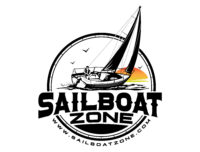
Can a Sailboat Tip All the Way Over?
Can a sailing sailboat tip over when it heels over? This is a question I hear a great deal. If it’s not asked of me directly, I certainly can see it in new sailor’s faces. Usually the first time under sail, and at the first big gust of wind! Everything appears under control. The sun, wind, and spray off the water invigorates and excites the crew. Then, all of a sudden a gust hits and the boat heels way over. There’s a panicked scream and the boat feels like it’s about to capsize!
Sailboats, when under wind power, just look unbalanced and susceptible to the wild forces of the wind. They rock back and forth so easily in the lightest waves. Visually, the center of gravity looks like it should be higher than it actually is. Sailboats appear very vulnerable to tipping. It is only natural to wonder if sailboats capsize, and to be intimidated by this reasonable possibility.
The following article deals with this. You will have an effective answer for yourself and for those who will inevitably ask you about this.
Generally speaking, sailboats that have a keel or are water ballasted, can not tip all the way over under normal sailing or cruising conditions. They can not flip upside down and, for the lion’s share of sailboats, they are actually self righting in the event of a “blowdown”.
The Keel is the Key!
There are physics equations I could quote to ease your mind. We are not going there. The short version is, the weight of the keel works in concert or in balance with the forces of the wind in the sails. Actually there is an intentional imbalance. The weight of the keel is engineered to win in the battle between gravity (the keel) and wind (the sails).
When a boat is under sail, the wind fills the sails and the boat leans over. This is referred to as “heeling”. Now, it is important to note here that the most efficient sailing is not when sailboats are heeled way over. I consider these kinds of sail setups over sailed, especially with the toe rail in the water. Many skippers feel that the larger the sail mass they have out, the faster the boat will go. Overpowering the boat is not the same as speeding up the boat. We are not talking about cars here.
When sails are properly selected and trimmed to the conditions, boats will heel over less. They will actually go faster! Sailing in high winds with properly selected sails, all properly trimmed, should yield a heel angle of 10 to 20 degrees. This condition is much safer and comfortable for the crew aboard. As a general rule, tbe a lot easier on your sails, your standing and your running rigging.
Heeling Over
Having too much sail out creates too much wind pressure, and thus overpowers the sailboat. This will cause the boat to heel over, sometimes uncomfortably. The skipper will be dealing with a great deal of weather helm (explained later). When the boat is heeled past comfort levels, and certainly past and uncomfortable 35 degrees (or more), an interesting phenomena happens.
First, and most obviously, the keel or ballast is also tilted towards the surface, out of its natural vertical position. This causes gravity to pull it (and the mast) back into this same vertical position. The other thing that happens is the sails and mast are also tilted way over, blown down, allowing a great deal of wind to spill out.
The further over a boat heels over, the more wind flows over or past the sails. With the wind spilling or blowing past a near horizontal sail, the wind has no power to keep the boat heeled over, let alone flipping the boat upside down. In this situation the boat will naturally right itself. If the boat has any forward momentum, then as the boat stands back up, the bow naturally veers directly into the wind. The term for this is “weather helm”.
You could maybe understand how a sailboat works by recognizing that sailing is finding a balance between overpowering weather helm (too much sail out), and too little sail out to power the boat.
All of the details above deal with regular cruising conditions that may get severe enough to trim sails, and at times may be deemed too extreme to sail in. The next section deals with extreme situations where capsizing is a real possibility.
All Boats Can Capsize
Yes that’s right, all boats can fall victim to the conditions and capsize. There are many anecdotes of sailors being blown down by a gale, but that is a temporary and extreme condition. Certainly not a situation a casual cruiser will or should get into. Usually these blow downs happen in storm like situations and the boat rights itself in short order.
Situations that could capsize a sailboat are the same situations that could capsize just about any other boat. If winds and gales are working against the sailboat, if there is far too much sail out, and if there are breaking waves as big or bigger than the sailboat all around, the conditions are prime for capsizing. Even in such conditions, where a boat has capsized, the keel of the sailboat can not remain turned up at the surface. The mast and sails will lay flat in the water, and gravity will pull the keel back down into a vertical position. This happens quite readily once the wind and wave energy abate, even for a moment.
If you ever find yourself in conditions such as these, your first order of defense against losing your boat is to close all hatches securely. Once your boat blows down, it is too late to take action. If you have a blowdown, or if you take a large wave into the cockpit during a blow down, you could very realistically flood the cabin and sink your boat if hatches are open.
Sailboats that WILL capsize regularly
There is another class of sailboat that can capsize, and that style of sailboat has a centerboard and not a heavy keel. There is no heavy counter-weight below the surface, like in a lead keel or water ballast style sailboat, and therefore no engineered righting solution in the event of an overpowering gust. If a gust comes and it is not properly mitigated by the skipper and crew, the boat will heel over, past its balance point, and the boat will partially turn over. This kind of boat is usually quite small, seats 2 or 3, and would be considered a day sailor.
These types of capsizing are not typically dangerous, but they are hard on boats. Stressing rigging in high wind is a recipe for wear on sails, masts, and damage to other components. Often these kinds of capsizing happen on purpose or as a result of overzealous risk taking during a race. Righting the boat is a simple, and relatively quick procedure.
The Most Stable Sailboat: The Catamaran
Another style of sailboat worth noting is the catamaran or trimaran style sailboats. These boats do not have a weighted keel that serves the same purpose or function compared to classic monohull sailboats. Instead, Catamarans are two hulled boats that have many unique advantages over traditional sailboats.
One advantage of the catamaran is its design that allows for shallow water sailing. Since there is no keel, like in a monohull boat, a catamaran can get into places that a monohull can not. Another advantage is that Catamarans are about as wide as they are long, which makes them spectacularly stable in just about any conditions.
When it comes to heeling over, a catamaran will generally get to about 10 degrees before sail adjustments and reefing are needed. Catamaran sailors are not usually concerned with tipping over. The concern that rides far above capsizing in high winds is the risk of breaking running rigging or other components because there is too much sail out.
How to handle a blow down
In the event your cruiser is involved in a blow down, remain calm. Give yourself a moment and take stock of the situation. What will immediately come to mind is the realization that you have too much sail out. If there is a reprieve in the gust, the keel will stand the boat back up. The bow will then veer upwind, effectively turning your sails into a flag. You will be “in irons” as they say. It is imperative at this stage that you reduce sail quickly.
The flapping of sails and sheets will be intimidating and admittedly dangerous. Take great care in your next steps. When possible, douse (lower) the jib as quickly as possible. If this is not possible, have your helmsman remain in the cockpit and point the boat directly into the wind. I would suggest powering up the motor so that you can maintain steering. Once again, the object at this point is to reduce sail. With the boat firmly held in irons, take in the sheet of the main. At least it is under control and not whipping at the mercy of the wind. Once confidence is restored that you are in control of your boat, take steps to douse the jib, then the main sail.
In conditions that can blow your boat down, you need to admit to yourself that you may be in over your head. Drop your sails and proceed under power. Should you decide that sailing is still your preferred choice, it is time to bend on a storm jib for the time being and head down wind while you lick your wounds. This small sail will allow you to use the extreme forces of the wind to provide forward movement. It will not be so much sail as to threaten another blow down. If heading upwind, you will also want to reef your main as small as it will reef. This is a difficult and dangerous process in winds that can potentially blow you down. The main is your only chance of upwind sailing, if that is your only option.
So to sum up, if sailing interests you, yet you have the fear of tipping all the way over, I hope you have found some comfort in the principles outlined above. Sailboats designed for comfort and cruising are usually designed to be sailed responsibly and within design parameters. They will not capsize under “normal” sailing conditions. That being said, it is the skipper who is responsible for ensuring the sailboat he pilots is appropriately set up for conditions. This means preparing and planning for the weather of the day. It means being observant and responsive to changing weather conditions (ie. correct sail choice). And it also means knowing when to pack it all up and head back to the marina if there’s just too much wind to manage.
Leave a Comment Cancel reply
If you are a human, do not fill in this field.
This site uses Akismet to reduce spam. Learn how your comment data is processed .
Boat Reviews
- Boats Specs
- Marine Pros
- Boat Insurance
- Boat Warranties
- Boat Transport
- Boat Towing
- Marine Forecasts

Your Ultimate Boating Resource

Can sailboats sink and resurface?
Sailboats are a popular means of water transportation and leisure activity. They are designed to be sturdy and reliable, with the ability to withstand the harsh elements of the open sea. However, there is always the possibility of something going wrong, and one of the biggest fears of any sailor is the sinking of their boat.
The question of whether or not sailboats can sink and resurface is one that many people have asked. The answer is yes, sailboats can sink, but whether or not they can resurface depends on a number of factors.
The most common cause of sailboat sinking is taking on water. This can happen for a number of reasons, including leaks in the hull, a ruptured water tank, or a sudden storm. If a sailboat takes on enough water, it can become too heavy to stay afloat and will sink.
If a sailboat does sink, its ability to resurface depends on the depth of the water it is in and how quickly it sank. If the water is relatively shallow and the boat sank slowly, it is possible for the boat to resurface on its own. However, if the water is deep and the boat sank quickly, it is unlikely that the boat will resurface without assistance.
In the event of a sailboat sinking, it is important to take quick and decisive action to try and keep the boat afloat. This could include sealing any leaks in the hull, deploying a life raft or floatation devices to keep the crew safe, and calling for assistance.
One way to prevent sailboat sinking is to take preventative measures, such as regular maintenance and inspections of the boat’s hull, engine, and other systems. It’s also important to be prepared for emergencies by having the proper safety equipment on board and knowing how to use it.
While sailboats can sink, their ability to resurface depends on a number of factors. It’s important for sailors to take preventative measures and be prepared for emergencies in order to minimize the risk of sinking and ensure the safety of the crew. With proper care and attention, sailboats can provide years of safe and enjoyable boating adventures.
Related Questions
What type of wood is used for pier pilings, what is the difference between a dock and a floating pier, what is the proper technique for pulling a beginner wakeboarder, what does ‘no wake’ mean on a lake, what is the difference between wash and wake, is wakesurfing possible in the sea, why don’t wooden piers rot, what size wakeboard is needed, how to achieve more pop on a wakeboard, does wake surfing translate to ocean surfing, latest posts, overview of the 2024 sea-doo rxp-x 325, overview of the 2024 parker offshore 2900 cc, what your boat’s beam is and why it matters, power cats of 2024: ultimate guide to the top power catamarans this year, don't miss, our newsletter.
Get the latest boating tips, fishing resources and featured products in your email from BoatingWorld.com!
Navigating the Heat: 10 Safety Tips for a Safe Boat Ride in the Summer Heat
Highs, lows, and tidal know-how: a deep dive into ocean currents, 10 essential tips for fishing near private property, the benefits of using a drift sock: guidance for anglers, lure fishing: secrets for imitating live bait and attracting fish, explore the untapped depths of america’s best bass fishing spots, outboard motor maintenance: tips for keeping your engine in top shape, the essential boat tool kit: tools every boater needs, diy boat building: 8 tips and tricks for building your own vessel, the art of miniature maritime craftsmanship: ship in a bottle, antifouling paints: a guide to keeping your boat shipshape, beginner’s guide to standup paddle boarding: tips and techniques, boating for fitness: how to stay active on the water, kayak safety: how to stay safe on the water, anchoring in a kayak or canoe: how to secure your small boat, overview of the 2024 yamaha 252sd, overview of the 2024 tiara yachts 48 le, overview of the 2024 bass cat jaguar sts, 2024 pursuit os 445: an overview, 2024 aquila 47 molokai review, 2024 sea-doo switch 13 sport review, gear reviews, megabass oneten max lbo jerkbait review, fortress anchors fx-7 anchoring system review, fortress anchors fx-11 anchoring system review, fortress anchors commando anchor kit review, fortress anchors aluminum anchors review, stay in touch.
To be updated with all the latest news, offers and special announcements.
- Privacy Policy
Inverted Stability: Once Upside Down
Last Updated on 05 August 2016 by Eric Bretscher
Inverted stability applies when a yacht remains upside down. It is a rare, but not unknown event and one situation where some understanding of yacht design and stability can become of crucial importance at sea.

Loss of the ballast is not particularly reversible…
Two main scenarios lead to capsize:
- Loss of the keel or ballast
- Yacht rolled by a breaking sea and remaining inverted
The first situation is difficult to overcome to say the least; the second is the one of interest to us here.
Safety directives today tend to require that offshore yachts achieve positive stability up to at least 120°. At the limit, this means that – in flat water – the yacht rights itself up from angles all the way to 120°, and rolls over completely to reach a stable inverted position from angles beyond 120°.
Debates whether this limit if sufficient or not exist. They are not very interesting due to lack of supporting data. Let’s say that:
- From a design point of view, trying to achieve near 180° of positive stability, i.e. fully self-righting, for sailing yachts is a very strong constraint that does not lead to desirable boats a lot of the time: narrow, deeply and heavily ballasted designs, cambered deck, strong sheer, generous roof. Designing for the rare exception can be acceptable, but preferably when it doesn’t have such detrimental consequences.
- Most cruising yachts exhibit a stability limit in the range of 120° to 140° on the paper, with most modern yachts hovering around 120° to 130°, more or less designed to the satisfy the rules, but the Angle of Vanishing Stability (AVS) is not everything when considering transverse stability. They would be far from achieving their theoretical AVS if challenged, due to the amount of weight added up high and general overloading: stern arches, radars, wind generators, mast steps, storage on deck, furlers, the list is near endless.
- A yacht getting rolled is usually the consequence of human error, the result of poor judgement or decision-making. Questioning the minimum AVS limit in this context is not automatically sensible, it is projecting a human issue onto the equipment.
- Generally speaking, small yachts are very easy to roll to high heel angles, large ones less so and the AVS has little to do with it. This is because the amount of energy required to upturn them doesn’t compare and sea conditions are the same for everyone. Small yachts can be very safe in good hands, but they are much less forgiving when handled improperly.
- The stability of even a large offshore yacht can never be sufficient enough to offset inadequate handling in a heavily breaking sea. The type of situation that would lead to a capsize can cause considerable damage and injury regardless.
This is why it is so difficult to challenge the consensus existing around vanishing stability around 120° heel. For all reasonable intents and purposes, it seems to be appropriate, even though one could wish for a little more for small vessels, below 10 metres.
Regardless, once inverted, most yachts are quite stable and sometimes more stable than upright as the deck and roof plane can be flatter and broader than the upright hull. As soon as the overturned hull rolls, buoyancy rapidly shifts towards the immersed deck edge to oppose re-righting. When sea conditions were sufficient to cause capsize due to heavy weather, it shouldn’t arguably take very long for another big one to hit the hull and appendages and “trip” the boat back up. Experience has shown that, in such conditions, yachts in fact seldom stabilise upside-down at all, but capsize doesn’t always happen that way:
The following account – quite recent then – was reported to me when I called in Ushuaia, Argentina, in 1996. A yacht crossing Drake Passage between Cape Horn and Antarctica was making normal progress in winds of 25 knots and the long, high sea that is so often found in this area. Conditions were good. Out of the blue, a single wave broke heavily on the beam and rolled the yacht over completely, leaving it inverted with the crew trapped inside. The water level started rising from the deck head up, and kept increasing steadily. Better ways to end than drowning trapped in a sinking boat were starting to be seriously considered on board when the yacht finally rolled to one side and came back, with a fair volume of water inside, but upright. The boat was reportedly upside-down for some 20 minutes. The crew bailed it out and brought it back.
In the same ocean area in 1996, a 38′ Dutch steel cutter was a day behind Yarra when it also got hit beam on by a large sea in moderate winds with the crew down-below and rolled to what was later assessed as about 135° from the damage sustained on board. The galley stove broke its gimbals and hit above the chart table on the other side. However, it wasn’t quite enough and the boat came back upright immediately. The crew brought it back slowly, handicapped by sail damage followed by a transmission failure.
Very few yachts are watertight in a fully inverted position. Typically, at least the companionway will leak, in most cases ventilators and dorade boxes will also contribute to water ingress. The paradox is that flooding is precisely what will cause them to come back, rather than sink as often suggested.
Flooding will cause an inverted yacht with its keel intact to come back
As water starts to rise from the deck up in the inverted hull and sloshes around as the boat rolls, it readily shifts into the hull-deck joint area, filling the “corner” and effectively removing the buoyancy in the part of the hull that was initially contributing to the righting moment. The mass of water in motion also further reduces stability through what is termed free-surface effect .
Provided the keel is intact, it is only a question of time before the boat comes back. Shift heavy gear to the lee side if possible, and if you can work out which one is the lee side. Let it fill and get organised to bail it out later. It will come back, but it usually takes enough water to fill the roof space and some more to slosh into the corner of the hull. Upright yachts abandoned at sea have sometimes been found flooded up close to the deck, but still afloat. It takes a lot less water than this to bring an inverted yacht back.
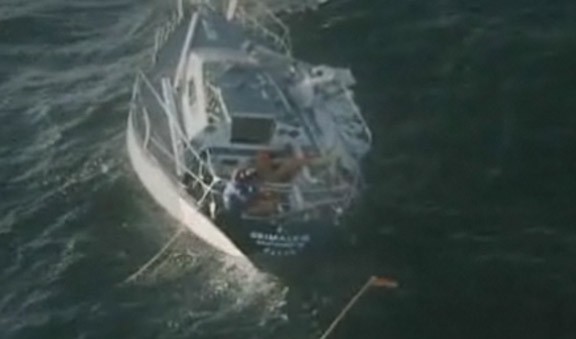
Fastnet 1979: Grimalkin, dismasted and rolled repeatedly. In spite of what was termed a poor stability curve and insufficient AVS, it didn’t end up remaining inverted.
A fully watertight vessel, like what can be obtained using a deck hatch as main entranceway, would not benefit from flooding and could remain inverted almost indefinitely without other ways of overcoming inverted stability.
2 Responses to “Inverted Stability: Once Upside Down”
Hi Eric, ” in most cases ventilators and dorade boxes will also contribute to water ingress.” – except Nordkyn doesn’t have any. How do you manage in hot weather or indeed in bad weather?
Your experience leads me to guess that there is as much if not more likelyhood of a yacht “sinking” as a result of collision compared to damage sustained in breaking seas. And in the case of Nordkyn the former seems unlikely given the watertight compartments and presumably her foamed interior.
Regards – Peter
Bad weather is the first reason why it doesn’t have any ventilators. With the Yarra, I punched in the North Atlantic at the beginning of winter in sea conditions that saw the entire deck disappear in the sea many, many times. No dorade box can withstand a treatment like that. I had flat screw caps I could use to seal the ventilators. I put them on early in the voyage and they stayed in place forever after.
I had a small opening port between the chain locker and the inside of the boat and I found this much more useful for getting some airflow in the boat in general and this could stay open in most conditions. In better weather, I keep some deck hatches just cracked open. The Yarra was quite wet forward due to the load on board and lowish freeboard in general, but Nordkyn is exceptionally dry. Both forward hatches open up facing forward and can literally scoop the breeze if desirable and possible. Then the small hatches above the galley and chart table are hinged longitudinally while located a log way aft and they are also very effective at creating air flow. The one on the lee side can usually stay slightly open in most common conditions.
Ventilators on the other hand have little actual flow and I personally find them more a hindrance and a problem than a useful feature. Having none also means they don’t clutter the deck plane, catch sheets etc.
Serious damage due to breaking seas is nearly always the result of poor choices in my view: either the choice of a boat that can’t sail, or the choice of not sailing the boat, hanging around with a beam sea, doing stupid things etc… Collision is rather unlikely and breaching an alloy hull is not that easy (but not impossible either). Watertight bulkheads are there in case of catastrophic event and because, when you build a new boat, they are very easy to implement. It would take too much water inside before enough of the foam insulation gets immersed and begins to prove useful, but it would help a little eventually. If you want reserve buoyancy against flooding, it needs to be located as low as possible in the hull. I did think about making some/all lockers watertight, but it is a strong constraint and not very easy to build. Partitioning the boat with sealed doors was far more practical.
In terms of survivability, my view is that watertight bulkheads are infinitely more relevant and sensible than stupid liferafts: people die trying to leave the boat. I am not leaving the boat, no matter what. I don’t think “rescue” or “assistance”, ever.
Leave a Reply Cancel reply
Your Comment
Name (required)
E-mail (required)

What Happens If Your Boat Sinks? (5 IMPORTANT FACTS)
Nobody wants to think about their boat sinking, but it’s an unfortunate reality that boaters must face.
Understanding what happens if your boat sinks is critical knowledge for any boat owner.
This article will cover five important facts about what happens if your boat sinks, including the safety of passengers and crew, recovering the boat, declaring a total loss, insurance coverage for a new boat, and factors that affect boat sinking.
We’ll also discuss ways to prevent boat sinking and provide a pre-departure checklist for boaters.
By the end of this article, you’ll be well-informed and prepared for the possibility of your boat sinking.
Table of Contents
Short Answer
If your boat sinks, you should call for help immediately.
Depending on the location, you may need to contact the Coast Guard or other local marine authorities for assistance.
You should also ensure that everyone on board is safely accounted for and take any necessary safety precautions, such as wearing life jackets.
Depending on the severity of the situation, you may also need to arrange for a tow or salvage service to recover the boat.
Safety of Passengers and Crew
When a boat sinks, the safety of all passengers and crew should be the primary concern.
This should be done as soon as possible, whether that involves immediate evacuation or waiting for help to arrive.
Depending on the circumstances, it is important to assess the situation and act swiftly.
If the boat is sinking too rapidly, it is important to get everyone off the boat immediately and into a safe location.
If the boat is taking on water more slowly, it may be possible to wait for help to arrive.
In any case, the safety of all passengers and crew should come first.
When assessing the situation, it is important to consider the type of boat, the cause of the sinking, and the availability of nearby assistance.
Boats that are over-loaded, poorly maintained, or in an area with a high risk of flooding are more likely to sink than those that are properly maintained and in an area with low flood risk.
Additionally, boats that are in an area with limited assistance may require immediate evacuation if the boat is sinking too rapidly.
It is also important to consider the weather conditions and the sea conditions when assessing the situation.
If the weather and sea conditions are too dangerous, then it is important to evacuate the boat as soon as possible.
Additionally, if the boat is taking on water more slowly, then it may be possible to wait for help to arrive.
Recovering the Boat

The possibility of recovering a sunken boat depends on the circumstances of the sinking and the depth of the water.
If the water is shallow enough, the boat may be able to be pulled up by a crane or a winch.
It is important to note, however, that the cost of recovering a boat can be substantial and may not be worth the effort if the boat is not in good condition.
In some cases, the boat may have sunk too deep or suffered too much damage to be recovered.
In this case, the boat may be declared a total loss and the owner may be able to receive compensation from their insurance company to help cover the cost of a new boat.
In order to recover a sunken boat, a professional salvage team must be hired.
The salvage team will be responsible for raising the boat and assessing the damage.
The salvage team will also be able to provide the boat owner with an estimate of the cost of recovering the boat.
The cost of the salvage is typically based on the size and weight of the boat, as well as the depth of the water.
When recovering a sunken boat, it is important to take the necessary safety precautions.
The salvage team should be properly trained and equipped with the necessary safety gear.
The team should also be aware of any potential hazards that may be present, such as sharp objects, debris, or hazardous materials.
It is also important to ensure that the salvage team follows all applicable safety regulations.
Recovering a sunken boat is a time-consuming and expensive process, but it can be worth the effort if the boat is in good condition and can be salvaged.
In some cases, the boat may be declared a total loss and the owner may be able to receive compensation from their insurance company to help cover the cost of a new boat.
Knowing what to do if your boat sinks is an important part of boat ownership, and understanding the process of recovering a sunken boat is essential.
Declaring a Total Loss
When a boat sinks, it may be declared a total loss, meaning it cannot be salvaged.
This means that the boat will no longer be able to be used and the owner will need to purchase a new boat or find another means of transportation.
The circumstances of the sinking will determine whether or not it is declared a total loss.
Generally, if the boat is not recoverable or is irreparably damaged, it will be considered a total loss.
Additionally, if the cost of salvaging the boat is more than the value of the boat itself, it may also be declared a total loss.
If the boat is declared a total loss, the owner may be able to receive compensation from their insurance company to help cover the cost of a new boat.
The amount of compensation received will depend on the policy that the owner has purchased, so it is important for boat owners to review their policy to see what kind of coverage is available.
Additionally, the insurance company may require the owner to prove the cause of the sinking, such as evidence of a collision or other accident, in order to receive compensation.
It is important for boat owners to remember that a boat can be declared a total loss for a variety of reasons and they should be sure to review their insurance policy to make sure they are covered in the event of a sinking.
It is also important to be aware of the potential costs associated with salvaging the boat and the potential for compensation if the boat is declared a total loss.
Being prepared for the worst-case scenario can help boat owners avoid unnecessary costs and headaches in the event of a sinking.
Insurance Coverage for a New Boat
If your boat sinks and is declared a total loss, the boat owner may be able to receive compensation from their insurance company to help cover the cost of a new boat.
It is important to understand the coverage offered by your insurance provider before you purchase a policy.
The type of coverage will depend on the type of boat and the insurance provider.
Most policies will cover damage to the boat, as well as liability if anyone is injured.
Some may also cover the cost of recovering the boat if it is salvageable.
Many policies will also provide coverage for a new boat if the original is a total loss.
The amount of coverage provided will depend on the policy and may include the cost of the boat itself, as well as the cost of any related items such as registration, taxes, and fees.
When considering insurance coverage for a new boat, it is important to read the fine print and understand the terms and conditions of the policy.
This will help ensure that you are getting the best coverage for your needs.
Additionally, it is important to keep in mind that insurance companies may limit the amount of coverage they provide for a new boat, so it is important to be aware of any potential limits before you purchase a policy.
Factors that Affect Boat Sinking
No one wants to think about their boat sinking, but unfortunately, it can happen.
There are several factors that can affect whether or not a boat sinks.
One of the most important is the condition of the vessel.
Boats that are regularly maintained have a much lower risk of sinking than those that are not.
The age of the boat is also important, as older boats may be more susceptible to structural damage or corrosion.
Its also important to pay attention to the weather and sea conditions.
In rough weather, even well-maintained boats can be at risk of sinking, particularly if they are carrying a heavy load.
Lastly, the type of boat is also important.
Boats with a deep draft or a heavy keel are more likely to sink than those with a shallow draft.
Ways to Prevent Boat Sinking

Preventing a boat from sinking is the best way to avoid a potentially dangerous and costly situation.
There are several ways to make sure your boat remains afloat.
First, regular maintenance and inspections are essential.
Boats should be inspected annually for any signs of corrosion, wear and tear, or structural issues.
Additionally, checking the boat’s bilge pumps and bilge areas on a regular basis is important to ensure they are working properly.
In addition, proper safety equipment should be on board at all times, including life jackets, fire extinguishers, navigation lights, and a working radio.
Finally, it is important to check the weather before heading out on the water and to be aware of potential risks.
Knowing the type of water you are in, how much weight the boat is carrying, and the type of vessel you are operating is essential to a safe and secure voyage.
Pre-Departure Checklist
Before you set sail, it’s important to make sure your boat is prepared for the journey ahead.
This includes conducting a pre-departure checklist to make sure the boat is safe and seaworthy.
Your checklist should include inspecting the hull, checking the engine and other mechanical components, and ensuring all safety equipment is in good working order.
If any repairs are needed, they should be taken care of before embarking on your voyage.
Additionally, it’s important to make sure the boat is properly stocked with supplies, such as food, water, and fuel.
These items should be checked to make sure they’re in sufficient quantities and in good condition.
Finally, make sure you have all the necessary navigation and communication equipment on board, including a radio, a chart plotter, and a GPS.
Having all these items in working order can help you stay safe and avoid any potential issues while out on the water.
Final Thoughts
It is important to remember that no matter how prepared you are, boat sinkings can still happen.
So it is important to be aware of all the factors that can contribute to sinkings and take the necessary steps to prevent them.
Make sure to check your boat before departing, have the right safety equipment on board, and have the right insurance coverage in case the worst happens.
Knowing what to do if your boat sinks will help you protect your passengers and crew, and will ensure that you are prepared for any potential emergency.
James Frami
At the age of 15, he and four other friends from his neighborhood constructed their first boat. He has been sailing for almost 30 years and has a wealth of knowledge that he wants to share with others.
Recent Posts
When Was Banana Boat Song Released? (HISTORICAL INSIGHTS)
The "Banana Boat Song" was released in 1956 by Harry Belafonte. This calypso-style song, also known as "Day-O," became a huge hit and remains popular to this day for its catchy tune and upbeat...
How to Make Banana Boat Smoothie King? (DELICIOUS RECIPE REVEALED)
To make a Banana Boat Smoothie King smoothie at home, start by gathering the ingredients: a ripe banana, peanut butter, chocolate protein powder, almond milk, and ice. Blend the banana, a scoop of...
Yachting World
- Digital Edition

How to stay afloat: Top tips for rescuing a sinking yacht
- Will Bruton
- January 7, 2020
Will Burton explains how preparing your yacht for the worst-case scenario can help you stay afloat for longer

The Catalina 41 Coolabah sank within hours of striking an object in the Pacific. Photo: John Jennings
Twenty miles south of Salcombe, in deteriorating weather, Timothy Meo realised that the new 36-footer he was helping to deliver to the Solent was sinking. “The engine compartment was flooded with a lot of water. Initially neither of us could tell where it was coming from.
“We found the rate of ingress reduced when we were making way, so we changed course towards Salcombe, made a Pan Pan call to Falmouth Coastguard and switched on the yacht’s two electric bilge pumps – neither of which appeared to be working.
“We took turns on the manual pump, which did work, but it was exhausting. The Coastguard were keen to send out a lifeboat, but after some time pumping, we eventually felt we were keeping up with the water coming in; so we declined their offer and pressed on.”

The deeper the hull breach, the more water is forced in. A 5cm (2in) diameter hole 30cm below the water will let in 11,000 litres in one hour. Move that hole down to 1m, and 20,000 litres of water will flow in
The yacht reached Salcombe safely and the source of water ingress was found to be an incorrectly installed wet exhaust system. Meo is philosophical about his near sinking experience. “We had a thorough handover from the yacht builder, a reputable company, and left with no reservations about making the passage.
“The assumption that a brand new boat is safe, though, is a dangerous one. We later found that the electric bilge pumps didn’t work because they were clogged up with shavings and dirt from the build process. A high pumping capacity, that’s been thoroughly tested, is absolutely essential. The boat being a unique design certainly contributed to the ‘unknowns’ about it. All of us learned from the experience, including the manufacturer. It could have been much worse.”
While it is rare, but not impossible, for a yacht’s hull to fail, mechanical failure is a more likely cause of sinking on a modern yacht. David Greening, a small craft surveyor, explains: “In a modern GRP yacht, the first three things I would always look at are mechanical.
“One: the condition of the propeller shaft seal. Two: the rudder stock, and three: the keel. Looking at both the fastenings and supporting structures. Failures in these three areas are the most likely points of failure, which can be caused by poor design or maintenance.”
Article continues below…

Mayday, we’re sinking – crew rescued from the ARC yacht Magritte as she goes down
Early evening on 3 December Steve Arnold was awoken by his friend and crewmate Andy Mills, who had noticed water…
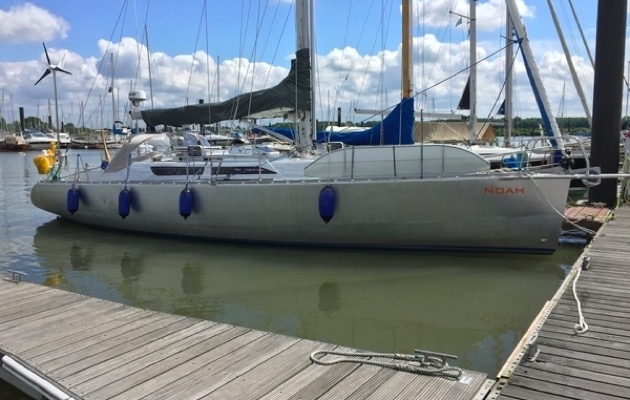
Three crew and two children rescued in the Atlantic from sinking ARC yacht
A crew of five taking part in the ARC transatlantic rally has been rescued after their yacht began sinking yesterday.…
As yachts have become more comfortably equipped, the number of seacocks has increased. With each comes an inherent point of weakness. “They should be inspected annually for signs of corrosion, rust and dezincification. The hoses should be double jubilee-clipped and have tapered soft-wood plugs in case they fail,” adds Greening.
So what should you do if you find your yacht is taking on water? First, you should try to determine where it is coming from. Second, reduce the rate of ingress. And third, get the water that has come in back out: in the most efficient way possible.
These fundamentals of damage control are something taught to every sailor at the Royal Navy’s Phoenix Damage Control Instructional Unit in Portsmouth. A multimillion-pound sinking ship simulator where all Royal Navy personal are trained, very realistically, in the fundamentals of how to stay afloat. Whilst there are some differences between a steel warship and a sailing yacht, they are battle-tested principles that can be used on any boat.

A manual bilge pump with good leverage is a useful addition, but what is your yacht’s overall pumping capacity?
Lieutenant Rob Manson, who runs the training facility, explains that they teach sailors to think and act fast. “With every minute that passes, the situation becomes more complicated. The more water that’s in the hull, the more unstable the vessel can be and the more likely it is to capsize. What we teach is a relatively simple skill set that can be put into practice almost anywhere on board. The training is conducted in seawater, so it focusses the mind!”
What equipment to have on board a yacht to stop it sinking is something that’s best decided after considering what a sinking might actually entail. Sailing rally safety checklists usually include soft wooden plugs for all seacocks, as well as manual and electric bilge pumps – all sensible things to have on board.
However, in recent years the number of yachts that have run into submerged objects, including whales and shipping containers , has increased significantly, posing the question: is being ‘holed’ likely to mean a round hole or more of an irregular gash.

Once floorboards and stores are floating – as here on the yacht Magritte shortly before she sank in 2016 – finding and tackling a leak becomes near impossible
One particularly impressive product is Stay Afloat – a flexible waterproof putty that can be jammed into the most inaccessible points and has proven itself to be highly effective.
It can be jammed into a failed stern gland, or seacock, seal along the line of a gash in the hull, or in conjunction with other materials found at hand.
The stern gland remains an Achilles Heel of modern yachts, explains Vyv Cox, a professional yacht engineer. “One of the largest holes in the boat, through which water might penetrate, is the stern tube through which the propeller shaft passes.
This has traditionally been sealed by a packed gland consisting of three or four turns of a woven flexible material such as graphite-impregnated cotton or PTFE. This design is reliable and rarely causes major leaks on failure, but it does have some disadvantages, resulting in the emergence of several patent seal designs.
In the vast majority of cases these are highly reliable and overcome the drips and need for greasing of the traditional type, but their failure can result in considerably greater influx of water.
“Originally, traditional gland types were solidly attached to the tube but the advent of flexible engine mountings dictated that the gland also needed to accommodate shaft movement by being mounted on a length of rubber hose. Fracture or loosening of this hose is potentially the greatest source of leakage.
“Packed glands can be over-tightened quite easily, leading to [the hose’s] disintegration. In some cases there are ‘dogs’ on both the stern tube and gland housing to prevent this. Most patent seal designs, exert far lower frictional drag, making this failure type less likely.”
If circumstances allow, stopping water coming in from the outside of the hull is likely to be more efficient as the water pressure is working with you, not against you. For this, a sail or piece of PVC matting stretched over the hole can prove effective, but only if it can be firmly held in place.

Under-bunk boards were cut, glued and drilled into place underwater on the catamaran Ensemble after she was holed
Even better is a combination of wood, Stay Afloat, and screws, which can be put together to fashion a serious patch. The essential tool to carry to make this work is an old fashioned hand drill, usable underwater, albeit slowly.
This solution carried the catamaran Ensemble over 800 miles when it was holed on a remote Pacific atoll while at anchor. Nearby cruisers came to Ensemble ’s assistance, including retired engineer Ed Butt, who helped fix a piece of wood to the outside of the hull by diving underwater and driving fixings through the hull.
Interior access to the hull is another consideration, particularly when buying a new yacht. Some modern moulded interiors actually make it quite difficult to get to parts of the hull that might be holed, so the means to break through the interior quickly is an additional consideration. A weighty axe is carried by many offshore cruisers for this purpose.

An engine driven bilge pump, common on fishing boats, can shift a large quantity of water and isn’t dependent on battery power
Modern yachts are usually equipped with both electric and manual bilge pumps, but surveyors often remark that electric pumps are poorly installed, meaning they are inefficient, while manual pumps would be of little use in an emergency. The sums make difficult reading for anyone with only a standard sized pump on board.
A hole 2.5cm in diameter, 30cm under the waterline, will let in 2,700 litres of water per hour. A 5cm hole in the same position will let in 11,000 litres. Most underwater collision damage occurs even deeper, meaning an even faster ingress of water.
Being able to pump out a large volume of water won’t save your yacht on its own, but it might just buy you enough time to affect a temporary repair, or abandon the yacht in a controlled way. So how do you go about increasing your yacht’s pump-out capacity significantly?
Something that’s common on even small commercial fishing boats is a main engine-driven bilge pump. Not reliant on electrical power to run (your yacht’s batteries could quickly find themselves underwater) and with a very high pumping capacity when compared to an electric pump, they operate directly from the engine.
Another option is fitting an oversized electric pump that’s rated for continuous use, or better, having one you can deploy quickly in any part of the boat on a long lead. Another tool Ed Butt used, two 4,000 gallon per hour (gph) pumps strapped together, made an enormous difference, buying enough time to make repairs with help from others in the same anchorage.

Twin 4,000 gallon per hour pumps kept water ingress at bay for long enough to effect a sturdy repair on Ed Butt’s catamaran Ensemble
The obvious and unexplained
Despite our best efforts, incidents in the past, such as the unexplained sinking of ARC yacht Magritte in December 2015 , demonstrate that well prepared and equipped yachts can and do sink without explanation.
In parallel, the risk of hitting a semi-submerged object, such as debris, sealife or a shipping container, would appear to have increased. So while preparing your yacht to avoid sinking, consider making preparations at the same time to abandon in a matter of seconds rather than minutes.
Pan Pan or Mayday?
In the event of finding out that you are taking on water, letting the Coastguard and other yachts know about your situation is wise. A Mayday should only be used if life is in ‘imminent danger.’ If you are sinking rapidly and anticipate abandoning the vessel very soon, send a Mayday.
A Pan Pan says ‘it’s serious, we need help, but there isn’t a grave or imminent danger to the boat or those on board’. Should things deteriorate rapidly, they will already have information about your position and situation.
Finding the source of a leak
- If you are sinking, locating where the water is coming from can be challenging, particularly if the source is below the waterline.
- First check that it is definitely seawater. A failed hot water tank valve on a larger yacht will result in a lot of water in the bilge! While it’s not generally advisable to taste bilge water, in an emergency, this is a quick way of determining whether it’s salty or fresh.
- Work logically through all of your boat’s through-hull fittings from bow to stern. A laminated diagram should be kept with the yacht’s documents. Be sure to include the stern gland.
- Pump as much water out as possible, this may well reveal where the water is coming from.
About the author
William Bruton, 27, grew up in Lancashire and learned to sail in 2012. He now works as a freelance skipper all over the world, specialising in Oyster yachts.
First published in the August 2017 edition of Yachting World.

Are Sailboats Unsinkable? (What’s The Truth?)
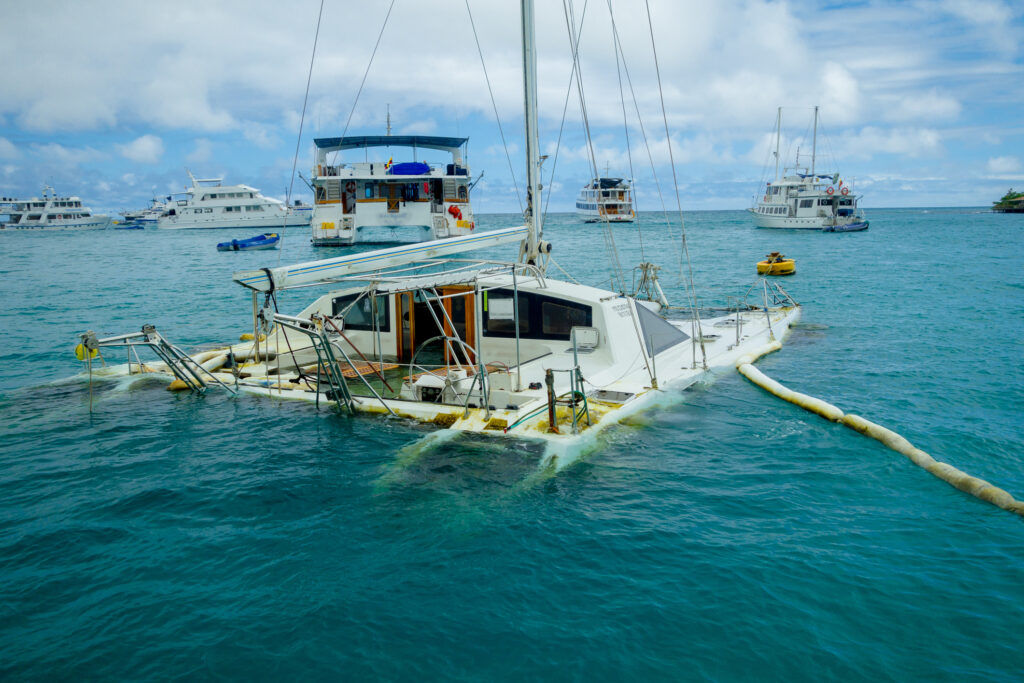
Anytime I see a boat that has sunk, I feel a bit of sadness inside. That boat was once filled with joy and now it sits at the bottom of the ocean. Just think at one point that boat was new and in perfect condition and now it is trashed. It’s a very sad sight indeed. When it comes to sailboats, there is a lot of concern about safety and sinking. If your sailboat was taking on water what would you do?
As a general rule consider all sailboats sinkable for safety reasons. There have been a few sailboats designed by Etap that are unsinkable but the majority of all sailboats can sink. Check with your boat’s manufacturer for more information on the build of your vessel.
When it comes to safety always be prepared when your boat is taking on water. Even if you think your boat can’t sink, be prepared if it does. Remember the Titanic?
This article will talk about sailboats and what to do if your boat starts to sink. I will also talk about my personal experience when my Catalina 22 took on a lot of water and almost sank. Let’s talk about that first.
My Experience With A Sinking Sailboat – True Story
I bought my first sailboat back in Idaho, read about it here , about 8 years ago. It was 22 feet and amazing. I didn’t have much experience with sailing or sailboats but I did have a few lessons about sailing before I purchased it.
I spent the early months of the year getting it ready for its slip on the lake in Idaho. Around April, I decided to put it into the water and start my summer sailing. This was a great day, at least at the beginning it was.
I had a couple of friends joining me as well to help celebrate this joyous occasion.
When you put your sailboat in the water there are quite a few things you need to check and one of those things is checking for leaks. I did not do this because I was young and stupid. I did not do enough research about sailboats and how to manage them and this set me up for panic.
We put the boat in the water and motored over to the docks. Everything was going great. Once we got to the docks, we noticed the outboard motor was not spitting out water. Unable to get a good internet connection to research this, we asked other sailors on the dock for help.
People around the sailing marina were extremely friendly and happy to help.
After looking at the engine they decided it was probably a problem down in the prop area that pulls water up into the engine. They suggested driving over to another marina and seeing if they could take a look at it. While we were troubleshooting this engine and from the moment we put the boat in the water, there was a major leak happening that we still had not realized.
I continued to check out the engine because I felt like the problem was something else, something that the previous owner told me about but I forgot. After looking at the hole where the water comes out for some time, I noticed something. There was no hole for the water to come out of. It had a small rubber plug stopping the water. I believe the previous owner put it in when the boat was in storage to keep bugs out. After removing this plug the motor ran great!
But that is when everything started to go into panic mode. After fixing the engine situation, I finally went below deck to organize everything and found the leak. In my Catalina 22, there is a step into the cabin that has a removable wood panel. This is where the battery box sits in the hull of the boat. When I took off that panel the water was already at the top of the opening.
PANIC! The boat was sinking or at least about to sink. I yelled at my friends to drive over to the ramp and get the trailer in the water, I was going to make a run for it in the boat. Thankfully the engine started right up and had decent speed. It was only about 100 yards to the boat ramp but I felt like the boat would go under any second.
Thankfully we were able to get it on the trailer before it went under.
Turns out, the bilge pump had become detached from the hose that dumps over the keel. The force of the water when putting the boat in must have forced it off. It could have been a quick fix if I had just checked when we first got it in the water. Live and learn or just better prepare next time.
I did eventually get the boat leak corrected and back to its slip before the sun went down, but it was a very long day in the end.
What would I have done if it did sink?
How Do You Salvage A Sunken Boat?
There are two ways to salvage a sunken boat, hire a professional or do it yourself. A professional will charge you based on the location and size of your boat, which could cost up to $5000 and beyond. If you do it yourself, you will have to rent or buy the necessary equipment to do it.
Anytime I see a boat that has sunk, I feel a bit of sadness inside. That boat was once filled with a bunch of people having a great time and now it sits at the bottom of the ocean. Just think at one point that boat was new and in perfect condition and now it is trashed. It’s a very sad sight indeed.
If your boat has sunk, time is of the essence. The longer the boat is fully submerged in water the more damage it will take. You need to get it afloat and back to shore as soon as possible.
The first thing you should do is call your insurance company. If you plan on hiring a salvage yard to retrieve your boat, maybe your insurance will help with the cost and be able to recommend a company in the area.
If you want to do it yourself, there is risk involved. The risks involved are safety and more damage to your boat. Since you are not a professional and have probably never retrieved a sunken boat, there is a good chance you could hurt yourself or break the boat even worse. Don’t do this unless you are confident you know what you are doing.
Follow the steps in the next section to retrieve your sunken vessel.
5 Steps To Retreive A Sunken Boat
These steps are a recommendation only and have no guarantee of any kind. Your boat and safety are your responsibility.
You will need a rope or chain to attach the recovery vessel to the sunken vessel. Attach these lines to the strongest parts of the boat to help avoid damage.
Next, you will need some type of flotation device to attach to the sunken boat. Make sure you have multiple floatations to attach to your vessel. Once they are attached you will need to fill them with air. See about bringing an air compressor to fill these underwater. Once they are filled, the boat will rise some.
If at all possible, see if you can do any sort of repairs to the leak/ hole in the boat. This will help new water from entering once it is afloat.
Once the boat is high enough in the water, add pump-out lines to the vessel to start pumping out water. The pumps should be strong enough to pump out enough water (before more gets in) to make the boat reach the surface.
When the boat has reached the surface and seems to be buoyant again, safely and very carefully tow it to shore.
These steps are general and a good starting point if you plan to do it yourself, but please consult an expert if possible.
In Conclusion
This article discussed sailboats and if they are unsinkable. As a general rule, treat all boats as sinkable. Even if the manufacturer says it is not. This will help keep things and people safe when sailing. If your boat does sink, they are a couple of ways to retrieve it, hire a professional or do it yourself. If you plan to do it yourself, please be careful! Cheers!
Boatlifehq owner and author/editor of this article.
Recent Posts
How to Repair a Sailboat Hull: Step-by-Step Guide
Maintaining your sailboat's hull is crucial for ensuring its longevity and performance on the water. Hull damage can occur due to various reasons, such as collisions, grounding, or general wear and...
10 Steps For Anchoring Your Sailboat
Anchoring a sailboat is a fundamental skill every sailor must master. Proper anchoring ensures your boat remains secure, preventing it from drifting and potentially causing damage. Whether you're...

How Often Do Sailboats Capsize & Sink?

Last Updated by
Daniel Wade
May 12, 2023
Key Takeaways
- Try to stay in the boat’s center for the best stability while sailing on smaller boats
- Make sure you have a working bilge pump before heading out to sea
- Many boats sink at the boat ramp due to collisions or other pilot errors
- A sunken boat cannot be saved without additional assistance
- Breaking waves could be dangerous in rough conditions that help capsize boats
Sailboats are designed to float but there are times when disasters happen that could change that. So how often do sailboats sink?
Each year on average, roughly 200 sailboats capsize and sink, which is less than you would imagine for the amount of boats on the water. If you are dinghy sailing, these typically capsize but do not sink. According to US Coast Guard reports in 2020, there were 211 boats that capsized and sank.
After careful analysis, boat sinking is a lot less common compared to a hundred years ago. Thanks to proper education and technology, sailors have adapted to safer sailing experiences.
Table of contents
What is the Likelihood of a Boat Capsizing and Sinking?
Boats capsize and sink for a variety of different reasons. If you know how to avoid those situations, you will likely be much safer and still have a working boat. Boats can capsize and only a select few are able to keep the boat from sinking.

US Coast Guard Statistics
The US Coast Guard reported 211 sinking boats in the year 2020. These numbers help shape an average for the number of sinking boats within a year.
Most of these accidents were user error, while a handful happened at the dock. The point is, no boat is safe from capsizing and sinking.
Type of Boat
When looking at ships, these are much higher sinking occurrences at two a week. There are a lot of vessels that go missing, so it is believed that many are sunk. It is estimated that thousands of boats sink each year but the type of boat matters in those statistics.
Understanding the Types of Capsizing That Leads to Sinking
There are two types of capsizing that boaters need to know. These are referred to as a knockdown or a turtle.
Knockdowns are also called flips in dinghy sailing. This is when the sails and mast are touching the water and the boat rests at a 90 degree angle.
Dinghies and catamarans can recover fairly easy from this situation. On a dinghy, the crew members should stand on the centerboard to help balance the weight of the boat. For a small catamaran, you would need a line on the upper hull to help pull.
Boats with keels will act a bit different depending on the situation in a knockdown. The crew can often add their weight to the side needed, but water pouring in certain spots may be too much to overcome.
A turtle is when a boat completely turns upside down and is likely going to sink. Dinghies and small catamarans can still turn things around from this situation, provided the crew is able to move the boat to a 90 degree angle from the added weight to the centerboard.
If you have a boat with a keel, this will need further assistance from a professional to help right the boat. Some boats are self-righting, but it varies on the type of keel and boat design. With any other type of vessel that turtles, you will likely need further assistance.
What Causes a Capsized Boat?
Many factors influence a boat to capsize and sink. Most of these should be common knowledge, but it is important to point out these situations so that sailors are better informed.
Flooding is the number one cause for ships to sink. As more water enters the boat, the more weight it adds.
Depending on where the water is coming in at will affect the weight distribution of the vessel. This causes the boat to lean or dive down quickly.
Collisions with an object or the ground can cause water to flood the boat. Depending on how bad boat hits something makes a difference on how fast the boat will take on water. This also affects the weight distribution, making the boat less stable and to potentially flip.
Larger boats are more susceptible to collisions since they require more time to safely come to a stop. Keep in mind that you can still do the same in a smaller boat.
Stability has Suffered
Multihull sailboats have much better stability than monohull boats. Sailboats with keels are also more stable.
If your boat is neither of those, you likely have less stability and could potentially capsize. With dinghy sailing, these are designed to move back and forth in the wind. This causes the boat to flip since it has less stability than others boats.
Bad Weather
Poor weather is the main cause of a sailboat or any vessel to capsize and sink. Since the ocean can be unpredictable in combination with weather, it creates a scary situation if the weather happens to be bad the day of sailing.
Pilot Error
A lot of times people make mistakes whether they are influenced by alcohol or something else. This is no different for operating a sailboat and the pilot makes a mistake.
Sometimes a pilot misreads the current situation on how rough the waves are and continues to sail when near a port. Other times it means failure to respond to dangerous situations due to lack of experience on the water.
Avoiding Preventative Maintenance
Sailboat owners need to routinely make adjustments and make sure the boat is working properly. Skipping out on maintenance could mean your boat does not function the correct way and you could capsize during unplanned conditions.
How to Prevent Capsizing and Sinking
A boat capsized is not a pretty sight while sailing and hopefully you never have to experience it. A lot of people believe that proper care can make sailboats unsinkable.
However, that is simply not true. Here are some tips to stay afloat in your sailboat and how to mitigate the risk.
Leave the Centerboard Alone
In boats that have a retractable centerboard you should always leave it all the way down while the sails are up. In the event you have run aground do not raise the centerboard. If you need to move the centerboard at all you must lower the sail to help lower your risk of capsizing.
Stay Seated
You should try your best to stay seated in smaller boats that tend to have a lot of influence in weight shifts. The weight shift messes with the boom or other parts of the boat needed to navigate safely.
Be Aware of the Wind
You should always keep your head on swivel for the latest wind changes. Sailors that can effectively monitor the wind and how it affects your boat will be one step ahead of any potential capsizing danger.
What to Do if Sailboats Tip Over?
No matter if you are a yacht owner or pilot on a sailboat, there are ways to help prepare for when a boat is tipping over. If your sailboat were to tip over, you should:
- Try to account for everyone that was on board
- Grab life jackets if you are already not wearing them
- Enter sailboat from bow or stern and never the sides
- Sit at bow and help bail water if you can (if applicable)
- Call for help
Related Articles
I've personally had thousands of questions about sailing and sailboats over the years. As I learn and experience sailing, and the community, I share the answers that work and make sense to me, here on Life of Sailing.
by this author
Learn About Sailboats
Most Recent

Affordable Sailboats You Can Build at Home
September 13, 2023

Best Small Sailboat Ornaments
September 12, 2023
Important Legal Info
Lifeofsailing.com is a participant in the Amazon Services LLC Associates Program, an affiliate advertising program designed to provide a means for sites to earn advertising fees by advertising and linking to Amazon. This site also participates in other affiliate programs and is compensated for referring traffic and business to these companies.
Similar Posts

Discover the Magic of Hydrofoil Sailboats
December 11, 2023

Hunter Sailboats: Are They Built for Bluewater Cruising?
August 29, 2023

What Is A Furler On A Sailboat?
August 22, 2023
Popular Posts

Best Liveaboard Catamaran Sailboats
December 28, 2023

Can a Novice Sail Around the World?
Elizabeth O'Malley
June 15, 2022

4 Best Electric Outboard Motors

How Long Did It Take The Vikings To Sail To England?

10 Best Sailboat Brands (And Why)
December 20, 2023

7 Best Places To Liveaboard A Sailboat
Get the best sailing content.
Top Rated Posts
Lifeofsailing.com is a participant in the Amazon Services LLC Associates Program, an affiliate advertising program designed to provide a means for sites to earn advertising fees by advertising and linking to Amazon. This site also participates in other affiliate programs and is compensated for referring traffic and business to these companies. (866) 342-SAIL
© 2024 Life of Sailing Email: [email protected] Address: 11816 Inwood Rd #3024 Dallas, TX 75244 Disclaimer Privacy Policy

- AMERICA'S CUP
- CLASSIFIEDS
- NEWSLETTERS
- SUBMIT NEWS

Why Boats Sink (and how to keep yours afloat)
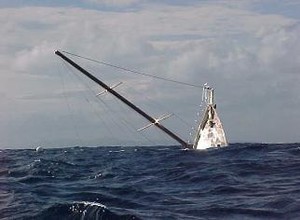
Related Articles


- CREATE AN ACCOUNT
- Boat Cover Finder
- Bimini Top Finder
- Boat Propeller Finder
- Engine Parts Finder
- Anchor & Dock
- Watersports
- Clothing and Footwear
- Engine Parts
- Cabin and Galley
- Covers and Biminis
- Electronics
- Paint and Maintenance
- Pumps and Plumbing
- Anchor Chains & Ropes
- Boat Fenders
- Boat Mooring
- Boat Protection
- Dock Storage & Protection
- Ladders, Steps, & Platforms
- Top Sellers

- Fishing Rods
- Fishing Reels
- Fishing Rod & Reel Combos
- Fishing Tools & Tackle Boxes
- Fishing Line
- Fly Fishing
- Fishing Bait & Fishing Lures
- Fishing Rod Holders & Storage Racks
- Fish Finders, Sounders & Sonar
- Trolling Motors
- Fishing Nets
- Fishing Downriggers & Acessories
- Fishing Outriggers & Acessories
- Fishing Kayaks
- Fish Cleaning Tables

- Inflatable Rafts
- Paddle Boarding
- Paddles & Oars
- Wakeboard, Wakesurf & Ski
- Wakeboard Towers
- Tow Ropes & Handles
- Life Jackets & PFDs
- Snow Sports
- Roof Racks, Carriers, Dollies

Men's Clothing
- Accessories
Men's Footwear
- Atheltic Shoes
- Water Shoes
Women's Clothing
- Dresses & Skirts
Women's Footwear
- Fuel Systems
- Sacrificial Anodes & Zincs
- Generator Parts
- Inflatable Boats
- Propeller Parts & Accessories
- Boat Manuals
- PWC Parts & Accessories

- Fishing Boat Seats
- Offshore Boat Seats
- Ski Boat Seats
- Pontoon Boat Seats & Furniture
- Boat Seat Pedestals & Hardware
- Boat Seats by Manufacturer
- Boat Tables & Hardware
- Boat Seat Covers
- Boat Seat Vinyl
- Floating Boat Cushions

- Barbeque Grills
- Boat Drink Holders
- Cabin Accessories & Hardware
- Boat Ventilation
- Interior & Cabin Lighting
- Marine Teak Products
- Carbon Monoxide & Smoke Detectors
- Binoculars & Telescopes

Boat Bimini Tops
- Bimini Top Accessories
- Pontoon Bimini Tops
- Other Biminis
- RV & Trailer Covers
- Boat Shrink Wrap & Accessories
- Boat Shelters
Boat Covers
- Boat Cover Accessories
- Boat Lift Canopy Covers
- Other Covers
- Boat Wiring & Cable
- Marine Batteries & Accessories
- Marine DC Power Plugs & Sockets
- Marine Electrical Meters
- Boat Lights
- Marine Electrical Panels & Circuit Breakers
- Power Packs & Jump Starters
- Marine Solar Power Accessories
- Marine Electrical Terminals
- Marine Fuse Blocks & Terminal Blocks
- Marine Switches
- Shore Power & AC Distribution

- Marine Audio & Video
- GPS Chartplotters & Accessories
- Electronic Navigation Charts & Software
- Digital Instruments
- Display Mounts
- VHF Radios & Communication
- Marine Radar
- Auto Pilot Systems
- Action Cameras

- Fiberglass & Epoxy Boat Repair
- Boat Paint & Varnish
- Marine Adhesives, Sealant, & Caulking
- Marine Engine Maintenance
- Boat Cleaners & Waxes
- Boat Cleaning Supplies

- Fresh Water Boat Systems
- Bilge Pumps
- Marine Plumbing Parts
- Wash Down Pumps
- Livewell Aerator Pumps & Live Bait Wells
- Toilet & Waste Pumps
- Marine Pump Replacement Parts

- Tires, Rims, & Hub Kits
- Boat Trailer Winches
- Boat Motor Supports & Transom Savers
- Boat Trailer Guides & Rollers
- Boat Trailer Fenders
- Boat Trailer Lights
- Boat Trailer Hardware
- Boat Trailer Jacks
- Boat Trailer Brakes & Axles
- Boat Trailer Tie Downs
- Couplers, Mounts, Hitches, & Locks

- Boat Deck Harware
- Marine Nuts, Bolts, & Screws
- Boat Handles, Pulls, & Rings
- Prop Nut Kits & Hardware
- Boat Cabin Hardware
- Marine Fasteners
- Boat Windshield Parts
- Boat Tubing & Rails
- Boat Mirrors
- Marine Tools & Tool Kits
- Boat Lettering

- Women's Clothing Deals
- Men's Clothing Deals
- Fishing Deals
- Anchor & Dock Deals
- Electrical Deals
- Electronics Deals
- Paint & Maintenance Deals
- Pumps & Plumbing Deals
- Boat Seats Deals
- Trailering Deals
- Camping & RV Deals
- Dealer Login

- Forums Login

- Search forums
- The iboats forum moderators would like to mention to all the iboaters here that we’re sorry but the website server seems to be running on half a cylinder and in order to post pictures, etc. you may have to use an outside hosting source, which we understand is not ideal, but its all we got at present. We are hoping that the administration can rectify this issue soon, but unfortunately at this time we can make no promises as to when... we have been working on letting the higher powers that be 'know of the situation... hang in there iboaters, we've been through a lot over the years and this is just another rough weather system rolling through to endure is all. Thank you.
- General Boating/Outdoors Activities
- Boat Topics and Questions (not engine topics)
sink drain is below the water line
- Thread starter bowman316
- Start date Apr 20, 2010
Lieutenant Commander
- Apr 20, 2010
I have a 26 ft sailboat, and the sink in the galley drains straight down, thru the hull, and the fitting is below the waterline. But the sink is above the water line. So would sea water come in thru the fitting, up to the waterline? and anytime i add water to the drain, that will push sea water out to make the water level in the pipe even again with the sea level? imagine a straw half way under water. the boat is not in the water yet, so i just want to make sure i don't need any new thru hull fittings before i launch it. also, the head intake and output are below the waterline too. is all of the standard practice, to put them all below the waterline?
Home Cookin'
Fleet admiral.
Re: sink drain is below the water line I doubt the head is legal. I wouldn't think the sink would drain well, except when you are underway. but if it drained above the line it would leave a stain. through-hulls beliow the water line scare me.
Re: sink drain is below the water line yea, the head is a direct discharge, and not legal. the boat is a 1970, and it was legal back then. All i have to do is put in a holding tank.
Re: sink drain is below the water line I just did a small scale test, with a styrafoam cup and a straw. I put the straw thru the bottom, and cut the straw so that the top ened half way up the cup. I put the cup half way into the water, and as long as the top of the straw was above the water line. get the straw below the waterline, and water came up thru the straw. So as long as the sink is above the waterline, then it will not come up thru the pipe. i also added water into the top of the straw, and the water drained right out. It instantly equalized with the level of the water outside.
Re: sink drain is below the water line Think about our glass of water at the resturant. Water never rushes out the top of the straw and once you finish sucking, the water falls back down the straw to the same level as the water..... Just hope that the line does not break or leak at the hull fitting.
Re: sink drain is below the water line there is a shutoff valve right at the fitting. so nothing could break that is LOWER than the shutoff. every fitting on this boat has a shutoff built into the fitting.
Supreme Mariner
Re: sink drain is below the water line I would be keeping it shut off till I needed the drain then shutting it off again afterward.
Petty Officer 1st Class
bowman316 said: there is a shutoff valve right at the fitting. so nothing could break that is LOWER than the shutoff. every fitting on this boat has a shutoff built into the fitting. Click to expand...
backwater dawg
Petty officer 2nd class.
kenmyfam said: I would be keeping it shut off till I needed the drain then shutting it off again afterward. Click to expand...
Re: sink drain is below the water line 2 keys?
Re: sink drain is below the water line the thing is that i want unlimited range. and not have to fuel up every 100 miles or so
Re: sink drain is below the water line My 1982 Catalina 25 has 2 sinks that both drain below the waterline. Hasn't sunk yet.... I usually use only 1 sink as intended and I keep that valve open. The other sink is a repository for cell phones, wallets, etc, as anyone with a sailboat will understand, and that valve stays shut.... I still find it absolutely hilarious that anyone ever found it necessary to put 2 sinks in a 25 foot boat. Proof positive that boat shows have not benefited recreational boating in the slightest!
- Apr 21, 2010
Re: sink drain is below the water line Absolutely nothing unusual or wrong with the setup you have. (Though as has been pointed out, a sink drain above the waterline does add a bit of 'security' if something fails.) The inlet & outlet for the head are always below the waterline.
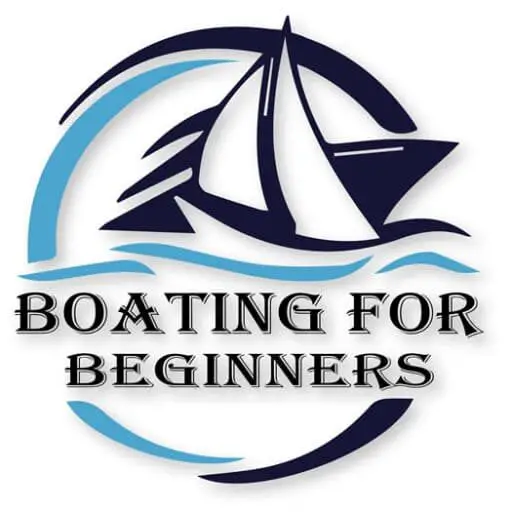
What Causes a Boat to Sink and What You Should Know
There’s no worst feeling than walking down to the docks with your fishing pole in hand, only to find your boat is now sitting at the bottom of the water. There are many different ways for your boat to sink. The most common way for a boat to sink is from a faulty bilge pump not working correctly, or a bilge pump float switch becoming stuck with grit and grime.
Here are some other common mistakes that might sink your boat:
Clogged scuppers: If you leave your boat docked year round, dirt, leaves and other debris could plug the scuppers and cause your ship to sink. If the suppers are clogged, water will not be able to empty.
Avoiding routine maintenance: Make sure to perform seasonal maintenance on the boat properly. Failure to replace cracked or worn rubber on the stern-drive, for example, could cause leaks that will sink your ship.
Lightning strike: When lightning strikes a boat that is not properly grounded, the lightning could cause a hole or crack where it leaves your boat hull. If your boat gets struck by lightning, and even though you can’t see any initial damage you should still have it looked it.
Drain plug: Forgetting to put the drain plug back on happens to even the best boaters out there. Before launching, ensure the drain plug installed. It’s also a good idea to keep a spare plug in the bilge.
Rocks and sand: Running aground is not only hazardous for your boat hull, but it can also be dangerous for the occupants onboard the ship. Keep a close eye out. If you do strike an object in the water, take the boat out right away and get it looked at for damage.
Tied up at the dock: Not common, but it could happen, you might have tied your boat up at the dock while the tide was low and as the tide begins to rise, it could trap your boat under the dock causing it to sink. Another scenario is that you tied up your ship while the tide was low, and as the tide went back up, your boat remained tied down as the water went over it.
Weather: Strong winds, causing massive waves could lead to capsizing your ship.
Dock damage: If you are not protecting your boat on the dock bumpers, or boat fenders, then having your boat banging into the dock caused by wind, or waves could crack or puncture a hole in your ship.
Damaged or cracked hoses: Your boat has many different hoses to help with many different aspects of your boat, and if one of those breaks, cracks or come off, then this cause something not to work correctly, such as a bilge pump for example. Always check your hoses.
Damage from another boat: Unfortunately there are bad boaters out there who don’t know what they are doing, or they don’t care, and they are very careless.
Corrosion: Corrosion is one of the leading causing for sinking a ship. By not properly taking care of your boat you could be unknowing, slowly sinking your ship.
What Are Scuppers On a Boat?
Scuppers are located above the waterline and they are used to drain out water from your boat deck, caused by waves going over the bow, or from the rain. Scuppers are also referred to as “self-bailing” because they use gravity to drain out water, as opposed to using your bilge pump.
Most scuppers have flappers which help to keep seawater out but still allows water to drain. Sometimes scuppers can get clogged with leaves or other debris and has been known to sink some ships this way.
Would a Sinking Ship Pull You Under?
Yes, you can be pulled under with a sinking ship. As a ship is sinking it creates a suction as the air in the ship is replaced with water. As the ship sinks it could begin to suck you down with it unless you have enough buoyancy to keep you afloat.
What Do You Do If Your Boat Is Sinking?
If your boat is sinking, there are a few things you should do immediately to ensure everyone’s safety and if you’re lucky, avoid the ship from completely sinking. You’d be surprised how quickly a sinking ship can take on water.
Make sure everyone is wearing a life jacket: Hopefully everyone on board was already wearing a life jacket, but for those who are not, make sure they get one on.
Send a distress call: Using your VHF radio, send out a Mayday call to the Coast Guard on channel 16. Make sure to give them your location, the number of people on board, your boat name, any injuries, and of course the reason for the call. Give them an idea on how long you think you’ll be able to stay afloat. The faster you call for help, the faster you will be rescued, which is why this needs to be a priority. Call for help as soon as you see a problem.
Try to empty out the water: Try to get the bilge pump going, removing as much water as you can. If you have a backup bilge pump, get that running as well. If all else fails, grab a bucket or anything else you can use to scoop out the water.
Personal flotation devices: If you have additional Personal Floatation Devices, make sure to pass them out to the passengers.
Get closer to land: If you are able to, try to get closer to land. Benching your boat in this situation is okay. If you are able to get back to land, don’t forget to keep the Coast Guard informed on where you are, and where you are heading.
Stay with the boat: The best thing you can do is to stay within the boat. Sure, you do need to prepare a life raft as a contingency in case the boat is fully sinking. However, you want to stick with the boat because this is where you can find resources and food. Plus, rescuers will check for the boat first, so you want to be there or nearby at the very least.
Abandon ship: If you have to abandon the ship, don’t forget to grab any supplies and emergency gear you can. If the boat is definitely going under, then make sure to keep a little distance, so you don’t get sucked down with it.
Use a personal location beacon: These are great tools because you can use them to send a light signal for the rescuers. It’s a good idea to have multiple PLB units with you just to be safe. Sometimes (especially during bad weather), it will be very hard for someone to save you, which is why having multiple PLB units is a very good idea.
Get as close to the deck as possible: You want people to see you when it comes to a potential rescue. It’s a lot harder to be detected when you have a boat sink in the ocean and you are at the bottom. However, you do need to stay as calm as possible. Maintaining your calm is the difference between life and death here. You need to control your breathing too and trust your instincts. Focusing on survival is the primary concern, panicking will just lead to problems, and you want to avoid all of that.
As you can see, if your boat begins to sink and you’re in the middle of a lake or in the sea, things could be rather grim. The best thing to do during all of this is to remain calm and focused. Try everything you can to stay safe and if you must go into the water, make sure that you have the proper equipment on you. Every little detail matters here, as you try to stay alive!
Does Boat Insurance Cover Sinking?
For boat owners, the number one claim for losses reported to insurance companies is due to hurricane damage, next on the list is sinking. Most sinking occurs while the boat is tied up to the dock stored in the water. The most common reasons for them to sink is because of some small part failing to work properly, such as hoses or hose clamps, bilge pumps, scuppers being clogged, etc. And most of the time it’s from parts that are found under the waterline.
You will be surprised to know that not all insurance companies will cover you if the boat sunk due to what they would describe as a “lack of maintenance” on your half. This would include any damage as a result of wear and tear, or corrosion. You should double check your policy to see what it says about this. You want to make sure you have “Consequential Damage” coverage, which will cover losses due to faulty parts.
What Is Scuttling?
Scuttling is when you deliberately sink a ship, by allowing water to fill the hull. This is achieved by leaving seacocks or hatches open. Or by drilling holes into the hull below the waterline. In some cases, explosives could also be used. Some of the reasons why someone would want to sink a ship on purpose could be as follows:
- To protect the ship from getting seized by an enemy.
- To create an artificial reef for marine life or divers.
- To avoid the ship from becoming a navigational hazard for other ships.
- To dispose of an old, or abandoned vessel.
Similar Posts
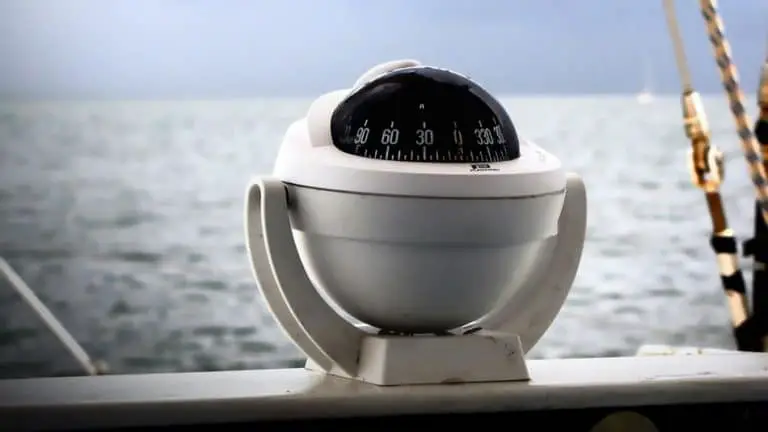
Where To Mount The Boat Compass
The boat compass is imperative for proper navigation, but if you want to read it properly, you have to know where to put it. A lot of people are confused, and they end up placing the boat compass in the wrong place. The compass should be mounted on the ship in front of the helmsman….
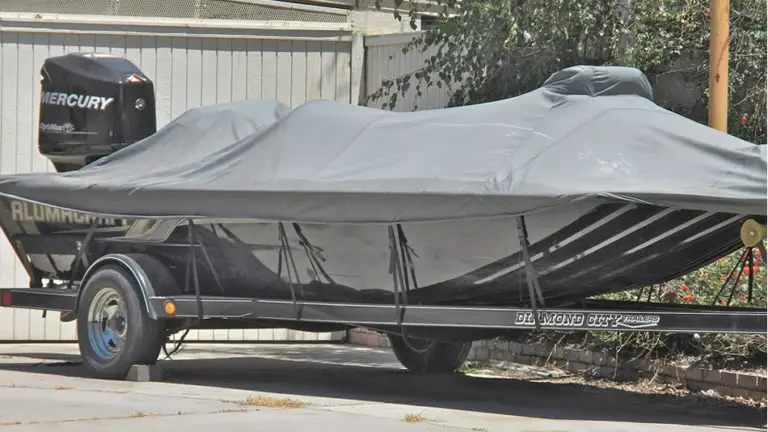
Boat Security – How to Prevent Your Boat From Being Stolen
I’m sitting here on a dock enjoying the sun and watching the boats cruise around. Not far from me is a marina filled with a lot of really lovely expensive ships, and it got me asking myself “what kind of boat security would these people have to prevent their boat from being stolen?”. Then it…
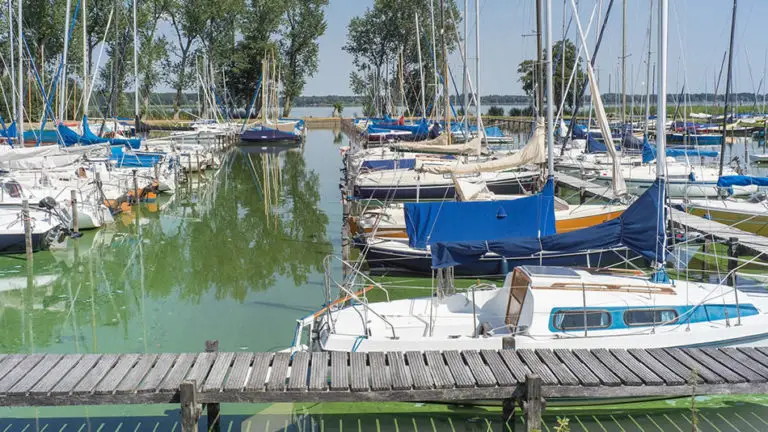
How To Get Rid of And Prevent Algae on a Boat
I have to admit; I didn’t know too much about algae until I began researching it. I figured if my son were going to be coming out on the water with me, then I’d better learn more about it and make sure it wasn’t going to be harmful to us. As it turns out, there…
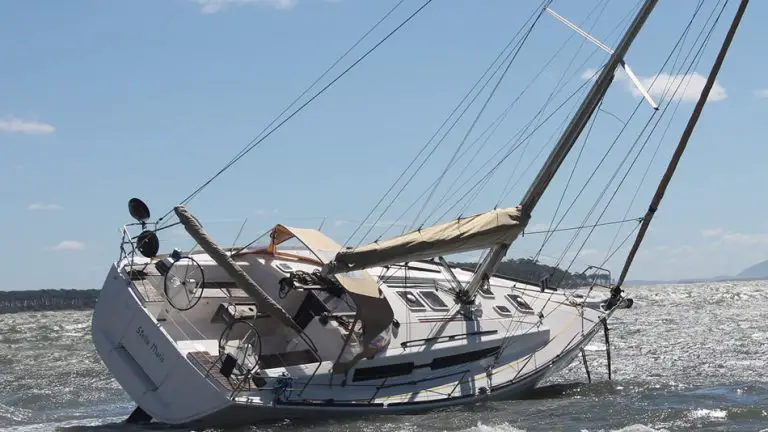
Can a Sailboat Tip Over? How to Avoid it From Happening
While out sailing across the sea with a friend, some thoughts came to my mind which I was unable to get away from. Can this sailboat tip over? What can cause it to tip over? Is there anything I can do to prevent it? These were the questions that kept asking myself over and over….
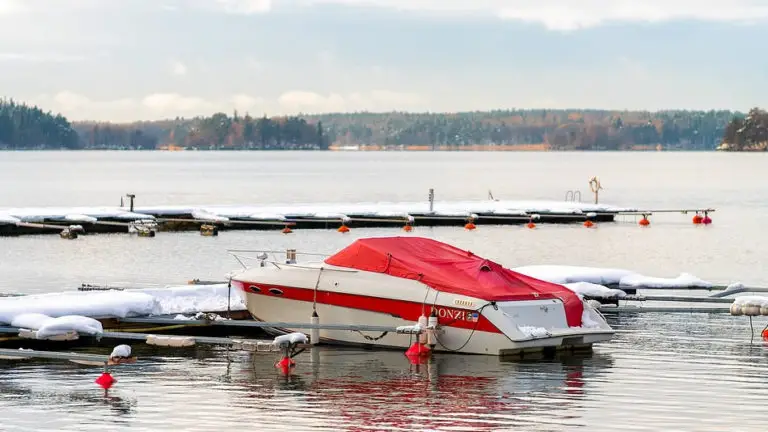
Everything You Need to Know for Winterizing a Boat
With winter right around the corner, the cold air will soon be taking over, causing temperatures to drop below freezing for half of the country. But before that happens you need to make sure that your boat is ready. Without properly winterizing your boat, you run the risk of water freezing and causing the engine…

Helpful Tips For Towing a Boat
Every boat owner knows that being able to take your boat everywhere you want is a privilege and a great way to spend your time. However, there are specific rules you have to abide when you want to tow a boat. Some states require special trailer brakes especially if the boat has more than the…
- 2024 BOAT BUYERS GUIDE
- Email Newsletters
- Boat of the Year
- 2024 Freshwater Boat and Gear Buyers Guide
- 2024 Boat Buyers Guide
- 2024 Water Sports Boat Buyers Guide
- 2024 Pontoon Boat Buyers Guide
- Cruising Boats
- Pontoon Boats
- Fishing Boats
- Personal Watercraft
- Water Sports
- Boat Walkthroughs
- What To Look For
- Watersports Favorites Spring 2022
- Boating Lab
- Boating Safety
- Ultimate Boating Giveaway

10 Ways to Prevent Your Boat From Sinking Dockside
- By Mike Telleria
- Updated: April 18, 2017
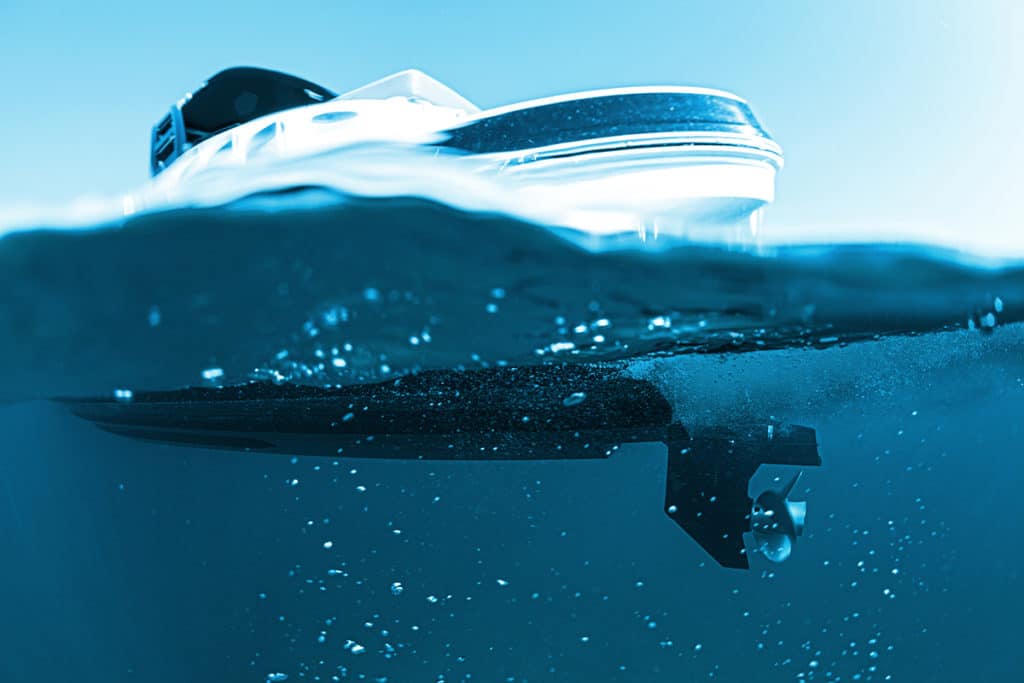
A boat shouldn’t sink unless something really bad happens, right? A high-speed collision, a fiery fuel explosion, a direct strike by lightning — these events certainly can sink a boat. But that’s not how most recreational boats go down. The sad reality is owner neglect sends most boats to the bottom.
Studies of insurance claims by BoatU.S. back this up, showing that more than two-thirds of recreational-boat sinkings happen at the dock or on a mooring. BoatU.S. further estimates that only 35 percent of such sinkings are out of an owner’s hands.
“Absent something like lightning blasting a hole in the boat or the hull becoming impaled on a piling in a major storm, a boat should never sink while sitting at the dock,” says Daniel K. Rutherford, a certified marine investigator with 35 years of marine casualty surveying experience and currently the director of claims and risk management for the Maritime Program Group. “Owner neglect by far sinks most boats at the dock.”
The upside to that? With some forethought, most dockside sinkings are entirely preventable. Here is a 10-point punch list based on the findings by BoatU.S. to keep your boat from sinking in its slip.
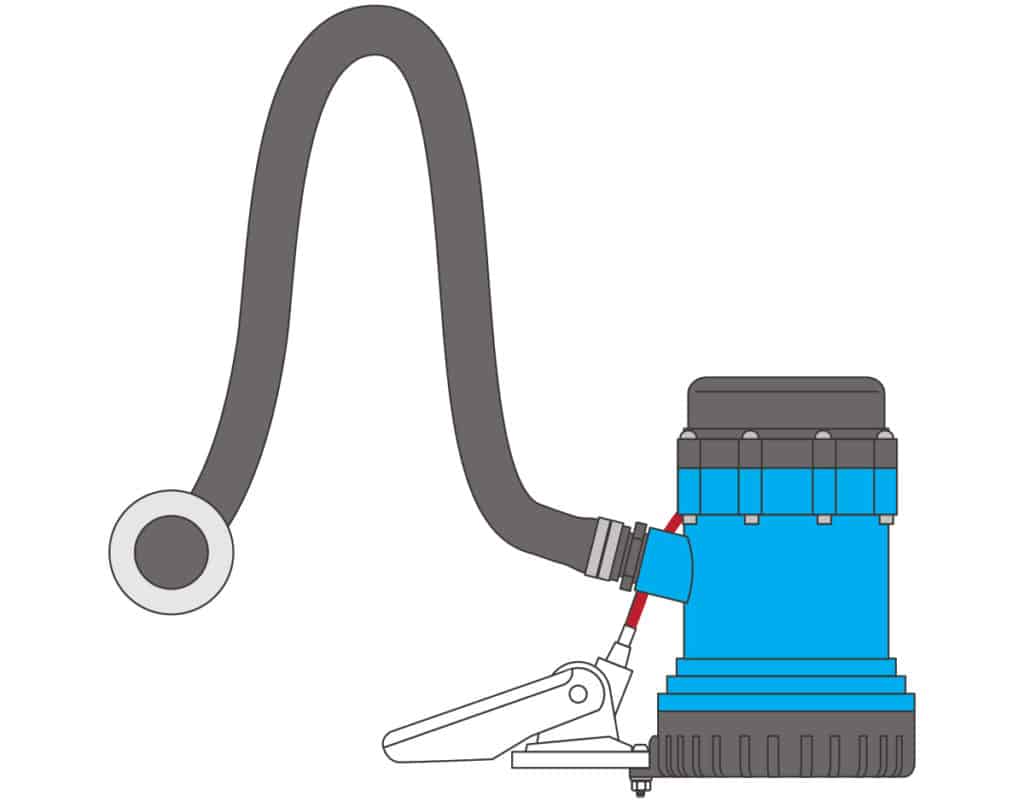
The (Not Always) Mighty Bilge Pump A bilge pump can really save the day in the event of an unexpected gusher, and it’s great for cleaning up the condensation and other unavoidable drips and drops that collect in the bilge. However, there is a huge amount of overreliance on bilge pumps to prevent chronic leaks from sinking a boat. “Nine out of 10 people who call to report a sinking say, ‘The bilge pump stopped working,'” says Beth Leonard of BoatU.S. “That’s not why the boat sank.”
If a small amount of water is continually getting into the boat — like through a leaking hose connection, an ineffective shaft seal, or a minor structural leak — it is not the bilge pump’s job to keep the boat floating indefinitely. The bilge pump is there to buy some time to fix the problem of water getting into the bilge in the first place. Eventually, the pump can fail or drain the battery — and then that little leak that didn’t seem like a big deal can slowly but surely fill the boat until it sinks.
For sure, you want the bilge pump and float switch to be in good working order in the event an unexpected leak does develop, and replacing plastic corrugated bilge-pump hose with nylon reinforced smooth-wall hose is a smart move. A bilge-pump counter that shows how many times the pump has run is a great way to see if the pump is cycling on with greater frequency. If it is, then you want to sniff around for a new leak and repair it immediately.
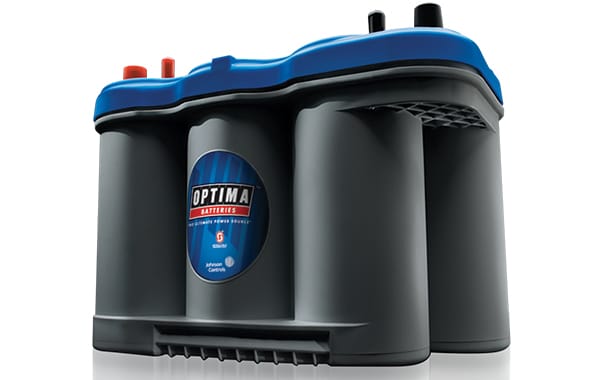
Do Winter Right When it comes to winterizing, an ounce of prevention can be worth gallons and gallons of cure. Ice can damage hoses below the waterline, strainer baskets and through-hull valves. Water can contaminate the gear lube during the boating season — if it freezes, it can crack metal and blow seals. Such issues can send the boat straight to the bottom come the spring thaw. Antifreeze in engine raw-water systems, strainers and freshwater systems, and fresh lube in the gear case are tops on any winterizing checklist.
Batteries sometimes go flat over the winter, rendering the bilge pump useless. If nobody is checking in on a regular basis, one or two minor leaks, or an unlucky rain or snow that ends up in the bilge, could sink her down. Super important point: Visit the boat. Winter or not, regular visits by you or marina staff can many times catch a boat that is starting to sink. You’ll have to deal with it right then, but that’s 1,000 times better than having to resurrect it from the deep.
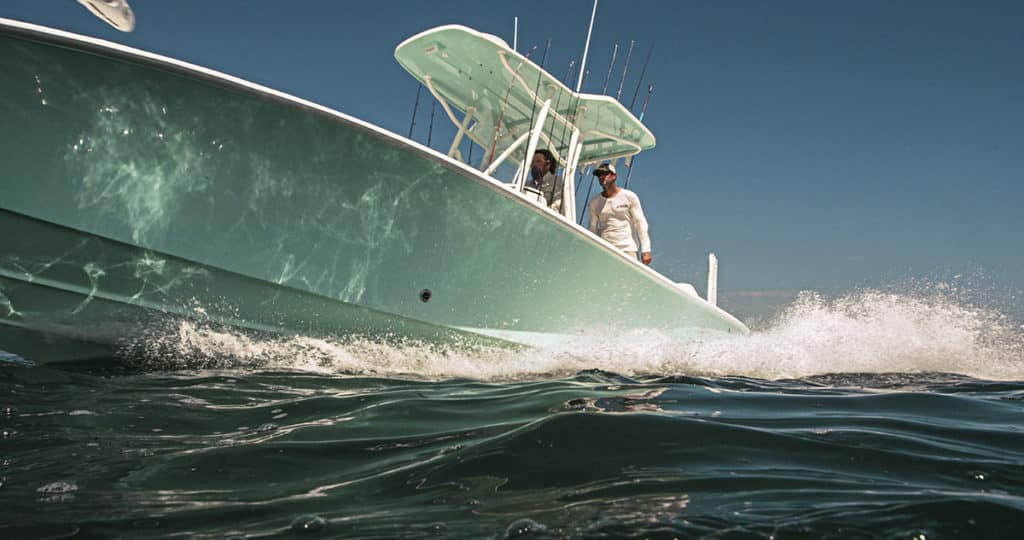
Your Boat is Full of Holes Not to be an alarmist, but your boat is likely already full of holes below the waterline. These can include holes for a drain plug, mounting bolts, transducers, sensors, through-hull valves and other items. In a perfect world, these — and any downstream hose clamps, fittings and strainers — would all be properly fastened, sealed and/or clamped to keep water out. And they likely were when the boat was brand-new. However, age, vibration (and pounding and slapping), thermal cycling, corrosion and other factors can work to loosen clamps and bolts and even cause structural cracks around fittings — all of which can result in leaks.
Do regular checks on all below-the-waterline fittings and connections. Replacing rusty hose clamps with one, or even two, quality stainless-steel clamps on hoses below the waterline is a good idea, as is replacing worn hoses with sturdy, reinforced ones.
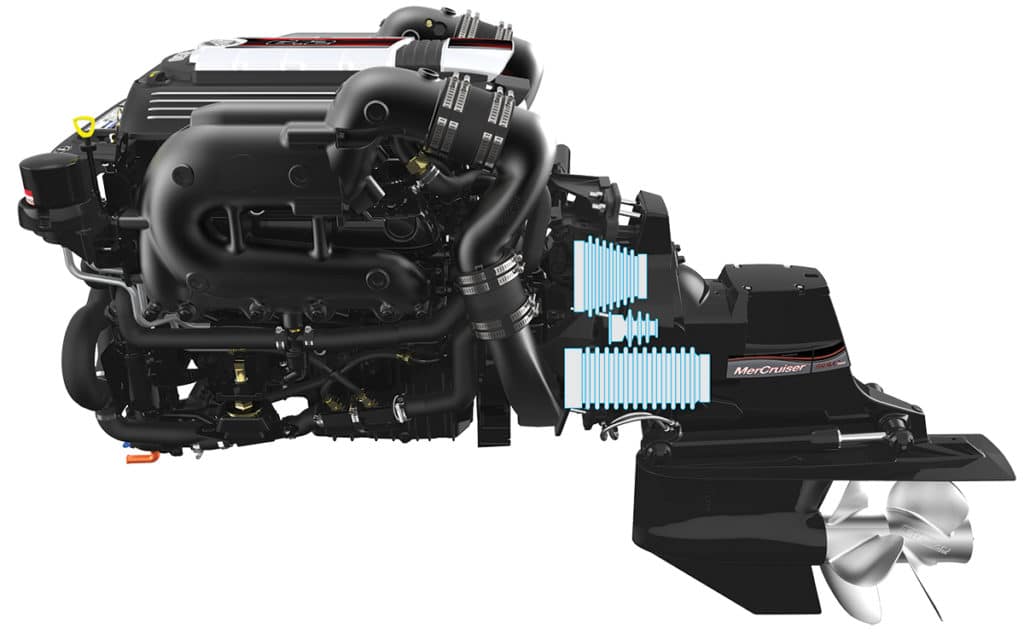
Be Good to Your Bellows Sterndrives account for more than a quarter of all part-failure-related sinkings, and eight out of every 10 sterndrive failures involve damaged bellows. The bellows are the flexible rubber boots that seal out the water between the engine and the drive for the universal joint, exhaust, cooling water and shift cable.
The bellows maintain their watertight seal while allowing the drive to turn side to side and trim up and down, but these repeated movements can eventually result in tearing from fatigue. Age and deterioration can cause the rubber to break down over time, especially if exposed to heat or other harsh conditions. Marine growth can be particularly troublesome by forming in the creases and causing a split. Recommendations include regular inspections for tears or cracks, annual haul-outs to clean and remove growth, and full replacement every three to six years or so. Attention here can improve your odds of staying afloat by double digits.
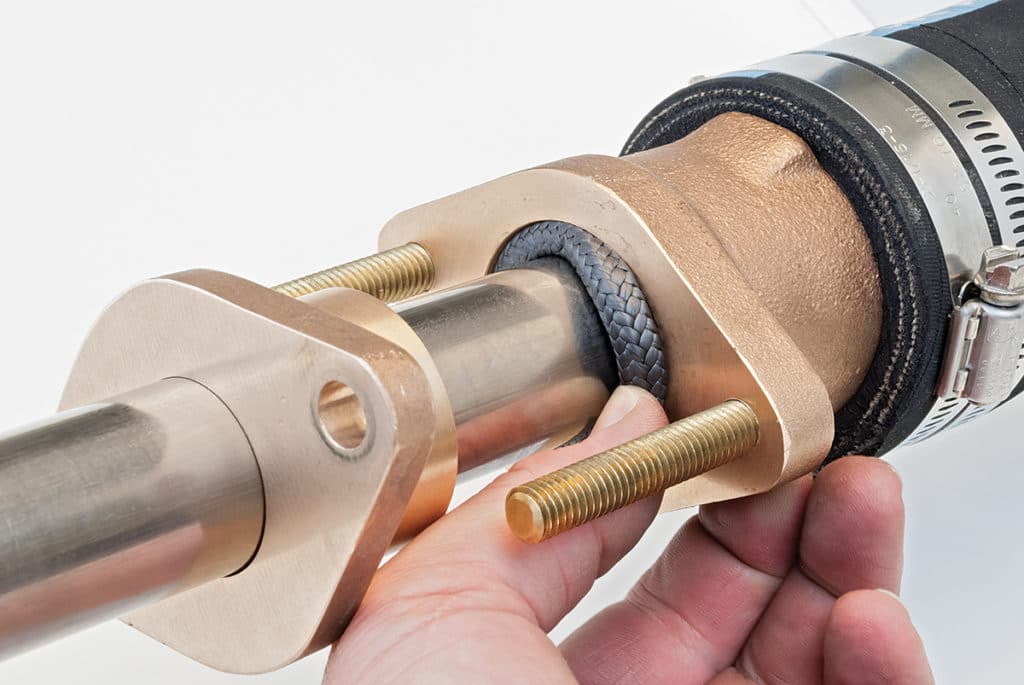
One Drop at a Time One below-the-waterline hole that deserves special attention is the opening where the propeller shaft passes through on an inboard boat. This will often be sealed with a few rings of packing material and a tightening gland all nicely referred to as the “stuffing box.” These are actually designed to allow a small amount of water to pass through into the bilge while the shaft is spinning in order to keep the stuffing box cool — typically only two or three drops per minute. At the dock with the engine secured, however, the seal shouldn’t allow any water inside. A slow and steady drip here can turn into a fast drip, then a stream — and we already know what happens if the bilge pump poops out trying to keep up.
Resist the temptation to keep cranking down on the gland packing year after year. The packing material can only be compressed so far, and too much pressure could eventually damage the shaft. A good rule of thumb is to replace the packing material every other year if the boat is in regular use.
Mechanical shaft seals are becoming popular, and they work great at keeping water out. But they do require a cooling water source, typically from a through-hull connection or a connection to the engine cooling water system. Either way, these connections need to be monitored to ensure they don’t spring a leak themselves.
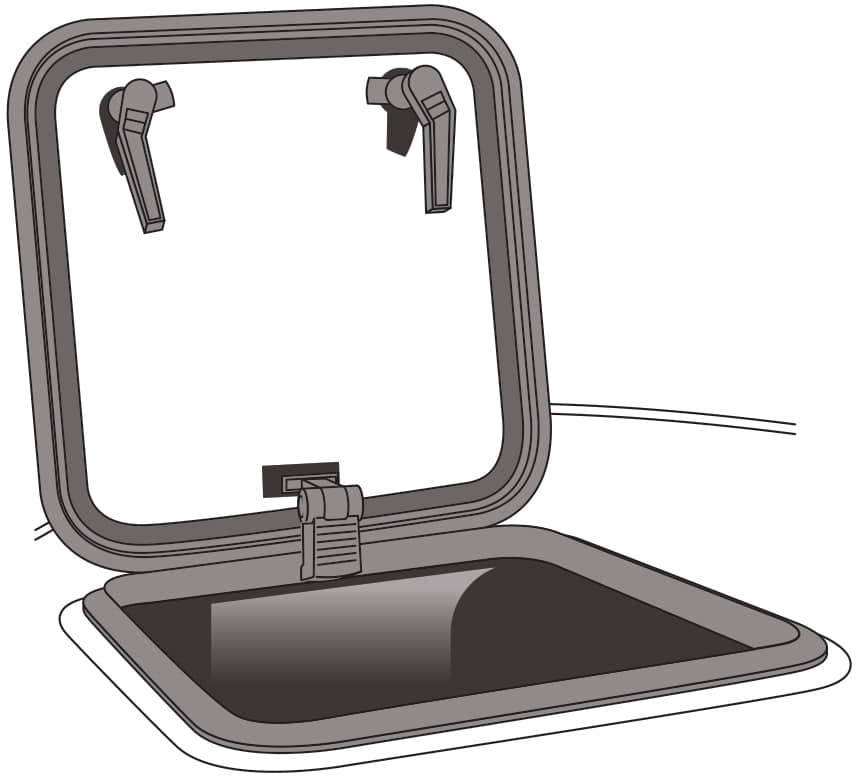
Batten Down the Hatches This simple step would prevent countless sinkings. At some point, it is going to rain. If the hatches leak — especially cockpit hatches where rainwater can accumulate — then we can end up with water in the bilge, an overwhelmed bilge pump, and a progressive sinking situation. Hatches need to have good, watertight gaskets, and they need to be able to be dogged down. Gaskets can deteriorate over time, so hit all the hatches with a freshwater hose once a year to make sure they are watertight (more on this below). And be sure to check that all are positively dogged down whenever away from the boat for anything more than a quick errand. The same advice goes for fuel fills, water fills and deck plates: Check the seals and replace as required.
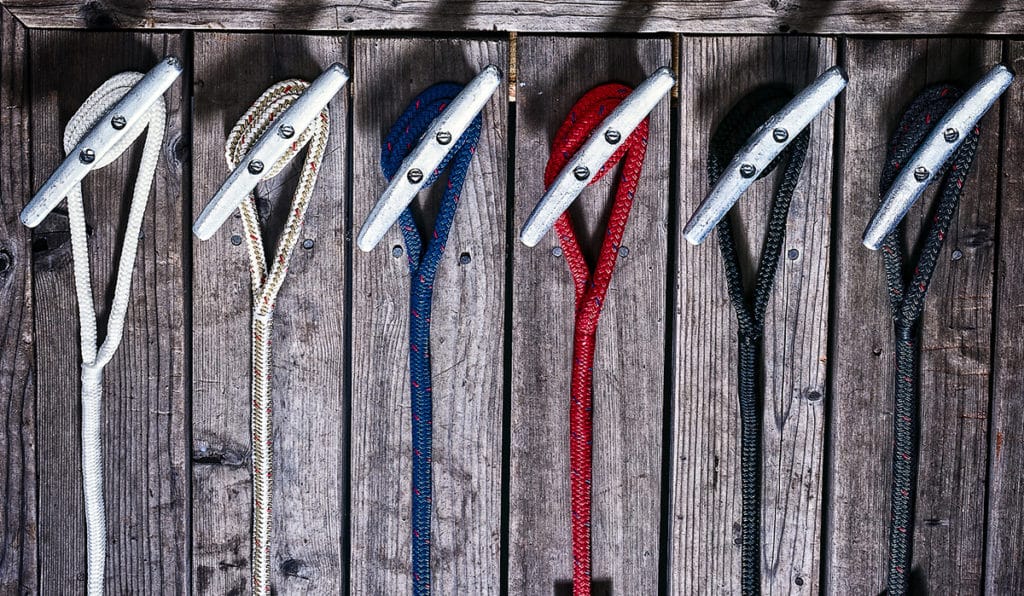
Good Lines A falling tide can easily trap a boat beneath a dock, where it will fill up with water as the tide rises — often leaving it hanging on its side by its lines. Good dock-line technique can save the day. It’s important to know the range between high and low tide to leave enough slack in the lines to allow the boat to stay centered and level. Long lines set at shallow angles, spring lines that run the full length of the boat, and crossed stern lines are all recommended. (TideMinders offers a product for boats that tie to pilings.)
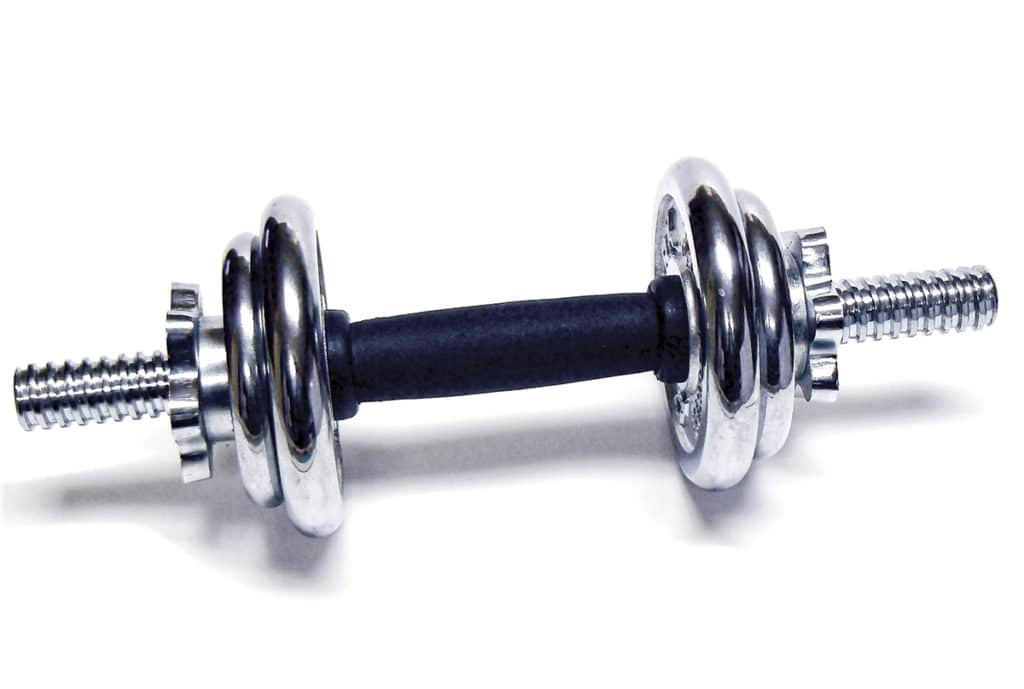
Weighty Issues It’s not uncommon to see a boat with cockpit scuppers or freeing ports designed to sit barely above the waterline once people, gear and fuel are aboard. Now replace that two-stroke outboard with a heavier-by-200-pounds four-stroke and watch the scuppers sink down to the waterline before people and gear are aboard. A big rain or an unexpected leak can easily push the scuppers below the water, causing them to allow water in the boat instead of out. This creates a progressive situation where the weight of the water pushes the boat deeper and allows more water to come in at a faster rate. Always be careful when adding weight to the boat.
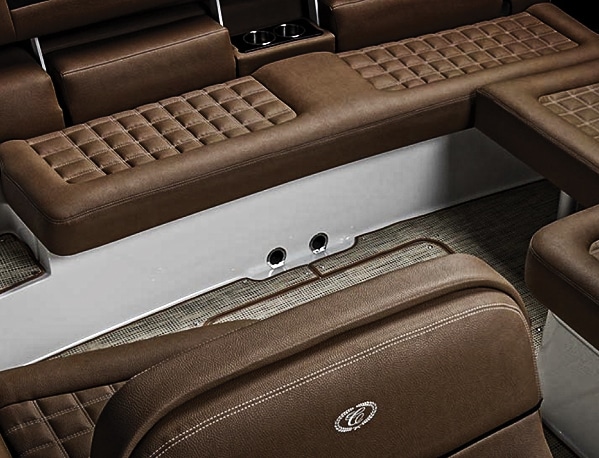
Cockpit Crisis The cockpit is where a lot of boating fun happens — think fishing, staging for watersports, and socializing. Cockpit flooding issues, however, can shut down the party before it ever gets started. Low freeboard trailer boats can be swamped when docked with the stern facing open water. Stormy conditions can generate waves big enough to splash into the cockpit — sometimes overwhelming the drainage and bilge pump.
There have also been a surprising number of sinkings due to cockpit drain fittings and hose fittings leaking into the bilge. Sometimes these are routed through the bilge area with little to no access, making it difficult to ensure hose clamps are tight and the hose is in good condition. There have even been cases of cockpit drains that drain directly into the bilge instead of overboard. Yikes! Clear, effective drains, tight cockpit covers, and vigilance during stormy weather could prevent one big rain from spelling disaster.
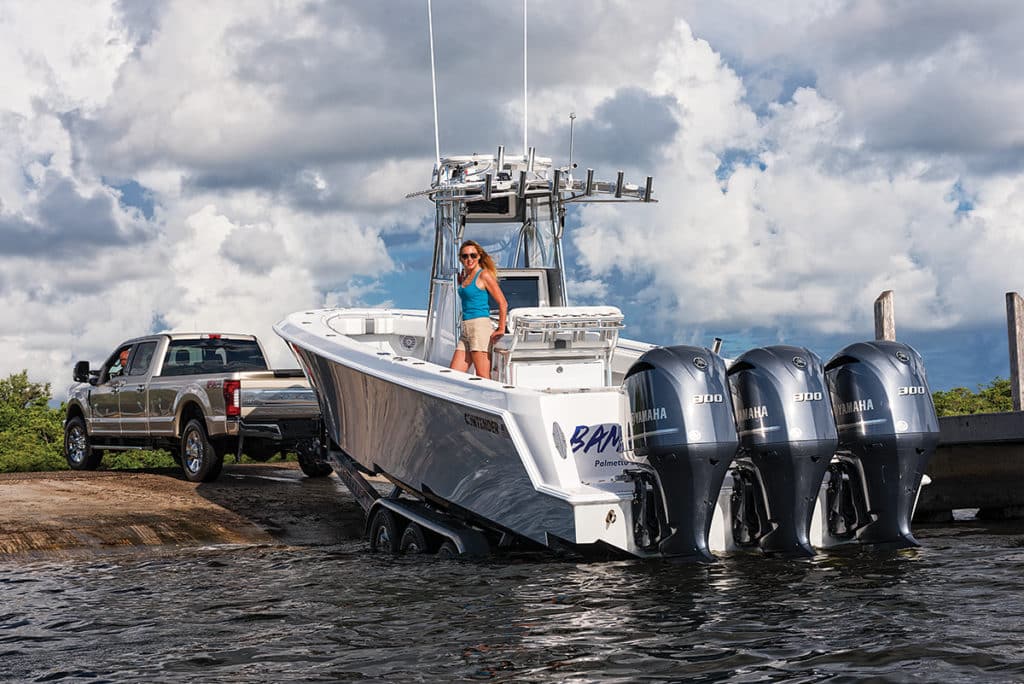
Doh! Of course, there are always a few bonehead mistakes that send boats to the bottom every year. Forgetting the drain plug when launching, forgetting to tighten the lid after cleaning a strainer, and leaving a shore hose running on deck after cleaning have all resulted in multiple dockside sinkers. Good habits can be helpful, like always checking for water ingress after launching and after cleaning a strainer, and always putting away shore hoses after use. Another good habit is conducting a yearly stress test by hosing down the boat with gobs of water to make sure the hatches don’t leak and the drains flow freely — any drips that make it to the bilge should be rectified. Then put the hose in the bilge to make sure the pump and float switch will be ready for duty if there is an unexpected gusher.
- More: Boating Safety , How-To
More How To
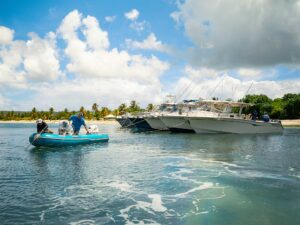
Grady-White Pulls off Its Largest Raft-up Ever in Vieques, Puerto Rico
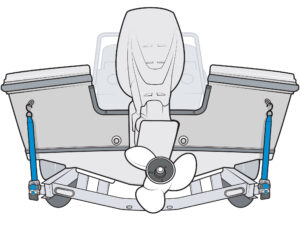
Installing Retractable Transom Straps
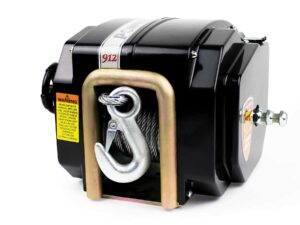
How to Choose a Trailer Winch
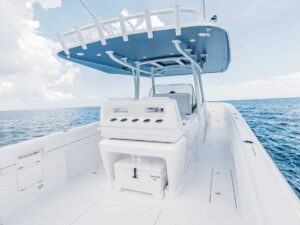
Best Non Skid Boat Deck Paint

2024 Alumacraft Timeline: Two Groups of Boaters x One Day Out on the Water
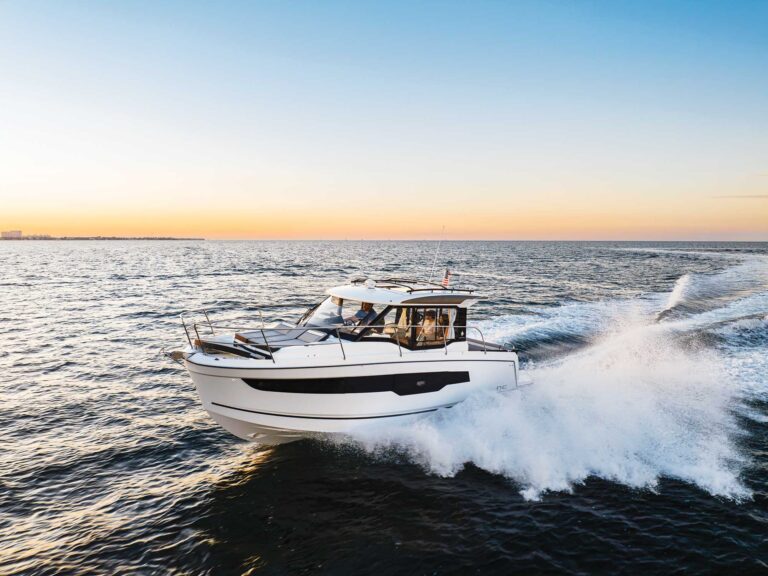
Boat Test: 2024 Jeanneau NC 895 Sport Series 2

Hydrogen Power for Boats

- Digital Edition
- Customer Service
- Privacy Policy
- Terms of Use
- Cruising World
- Sailing World
- Salt Water Sportsman
- Sport Fishing
- Wakeboarding
Many products featured on this site were editorially chosen. Boating may receive financial compensation for products purchased through this site.
Copyright © 2024 Boating Firecrown . All rights reserved. Reproduction in whole or in part without permission is prohibited.

Service Locator
- Angler Endorsement
- Boat Towing Coverage
- Mechanical Breakdown
- Insurance Requirements in Mexico
- Agreed Hull Value
- Actual Cash Value
- Liability Only
- Insurance Payment Options
- Claims Information
- Towing Service Agreement
- Membership Plans
- Boat Show Tickets
- BoatUS Boats For Sale
- Membership Payment Options
- Consumer Affairs
- Boat Documentation Requirements
- Installation Instructions
- Shipping & Handling Information
- Contact Boat Lettering
- End User Agreement
- Frequently Asked Questions
- Vessel Documentation
- BoatUS Foundation
- Government Affairs
- Powercruisers
- Buying & Selling Advice
- Maintenance
- Tow Vehicles
- Make & Create
- Makeovers & Refitting
- Accessories
- Electronics
- Skills, Tips, Tools
- Spring Preparation
- Winterization
- Boaters’ Rights
- Environment & Clean Water
- Boat Safety
- Navigational Hazards
- Personal Safety
- Batteries & Onboard Power
- Motors, Engines, Propulsion
- Books & Movies
- Cockpit Confessions
- Communication & Etiquette
- Contests & Sweepstakes
- Colleges & Tech Schools
- Food, Drink, Entertainment
- New To Boating
- Travel & Destinations
- Watersports
- Anchors & Anchoring
- Boat Handling
- ← Safety & Prevention
When It Rains, Boats Sink
Advertisement
A heavy rainstorm has the potential to sink boats, but it doesn't have to be that way.
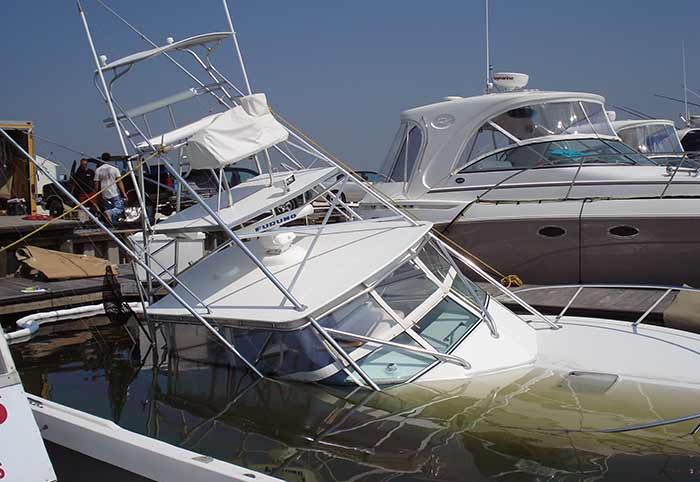
Keeping rain from sinking a boat requires proper design as well as owner involvement.
Let me start with a few apparently false assumptions. The boats we use should be designed to float even when it rains. Bilge pump systems should be able to expel water from boats to keep them afloat when there is a hose failure or ... even when it rains. Finally, designers and builders should design and build boats to handle the weather and to not sink ... even when it rains. Now, we all like to think that when we are out plying the waters of our rivers, bays, and oceans that our boats are well equipped to keep us afloat and safe, right? But what about when she (yes, I still call boats "she") is left alone to fend for herself dockside? According to a study done by BoatUS, the majority of boats (69 percent) sink dockside or while the vessel is moored. Such was the case on August 13, 2014, when a torrential rain with five-to-eight inches of the stuff hit several areas on the Jersey Coast in just a couple of hours. In the wake of the storm, dozens of boats were at the bottom or hanging from their lines dockside ... But why?
I was tasked to clean up the carnage. While handling the salvage operations and ensuing loss evaluations, I focused on both the damage and the "why" the boats sank. While not too surprising to me (I had 30+ years of handling damage claims under my belt), taking the time to document the findings in a detailed way left me wondering, "What could prevent these sinkings?"
In every case, the cockpit scuppers were overwhelmed and/or the deck drains, hatch covers, gutters and engine compartment lips failed to keep the water from draining into the bilge. The flooding became progressive in nature. This is nothing more than a practical application of Bernoulli's principle of fluid dynamics. With more water in the bilge, the boat sat lower on her lines, and then even more water, at an ever increasing volume, down-flooded or back-flooded into the boat and bilge through the scupper or freeing ports in the hull. The result is a salvage job and often a constructive total loss.

The well scuppers of this boat were directly at the waterline. A hatch mounted in the well allowed water to leak into the bilge, eventually sinking the boat.
Example #1: 25-foot Sportfisher
The scuppers were below the waterline at the transom and just at the waterline in the cockpit. Directly forward of the port and starboard side scuppers were hatches that led to the bilge. The hatches were not dogged down, and the manufacturer had made no attempt to seal them. Water failed to drain out of the scupper system fast enough, and the boat began to take on water through the leaking hatches into the bilge, overwhelming the bilge pump. As the boat became heavier, the scuppers submerged under water, and that was that.
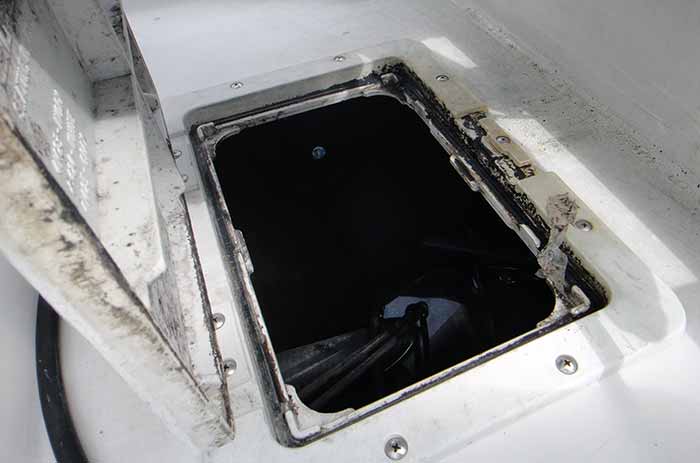
Lack of gaskets on hatches can allow a leak from a deluge to fill the bilge.
Example #2: 24-foot Center Console
Fitted directly ahead of the outboard in the engine well was a hatch for access to the bilge, pumps, and wiring. The hatch was originally fitted with a gasket, but the gasket was worn, and the hatch was not dogged down. The well scuppers allowed a constant flow of water into the outboard well, which drained into the bilge. Over time, the pump failed and the boat sank.
Example #3: 16-foot Flats Boat
The vessel was repowered with a heavier four-stroke outboard that replaced the original two-stroke. The boat was floating, but right on the edge of disaster. Along came the rain, and down she went.
Example #4: 25-foot Older Walk-Around Cuddy
The boat had originally been designed as an inboard/outboard (I/O) model but was built, straight out of the factory, with an outboard on a bracket. The manufacturer replaced what should have been the sealed I/O engine cover with a regular deck hatch. The scuppers were just at the waterline. The hatch was not sealed or dogged down, so rainwater accumulated quickly and flooded the boat until she sank.
Failed Bilge Pumps Don't Sink Boats
I could go on and on because these sorts of scenarios repeated themselves again and again. That said, there were several consistencies throughout this event. Time and time I would hear that either the boat sank because the bilge pump failed or simply that the rainwater could not drain out of the boat fast enough, or it was draining into the bilge — or a combination of the two.
Let me make one thing perfectly clear: Boats do not sink because bilge pumps fail. They sink because we fail to keep the water on the outside of the boat. So let's not blame this on the bilge pumps. Bilge pumps are designed to remove nuisance water and minor leaks. They provide a short-term solution, not long-term maintenance relief. So why do boats sink when it rains? Let's look at some very common problems first, and then get into how boat owners can stop worrying when it begins raining.
The most common problem is simply hatch openings in decks that are not dogged down and are not fitted with proper gaskets to make them watertight. Many of these hatches (mostly plastic) are fitted right in front of the outboard well to facilitate access to the outboard mounting bolts, pumps, and hoses. Water backs up in the scuppers and drains directly into the bilge. The pump works and works, but eventually the battery to which it is connected becomes discharged, and down she goes.
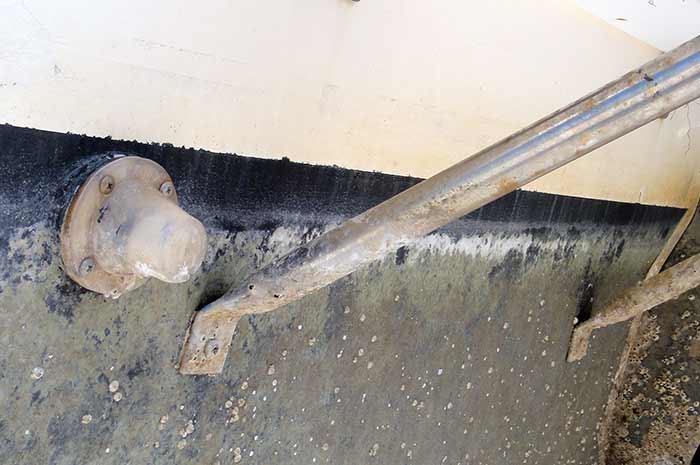
These float-ball style scuppers often are installed when water backflows into the boat. They're not designed to keep a boat afloat.
Next is simply poor design in scupper or freeing port location. The American Boat & Yacht Council (ABYC) has recommended standards for the placement of scuppers, scupper sizes, and the minimum heights above the load waterline of scuppers both while the boat is static and at maximum heel. Time and time again, we see scuppers that are right at the waterline and often well below the waterline due to poor design, though sometimes this happens when boat owners put too much stuff in the stern. An immediate sign of a pending problem is a boat with float-ball-style scuppers to prevent back-flooding; if you're considering such a boat to buy, don't walk away from it — run. Cockpit decks are supposed to be designed to be a minimum of four inches above the waterline but aren't always. Even when a slight amount of water drains into the bilge, the result is disaster because the boats may be designed on the edge with little safety margin. Throw in an anchor and some chain back there, and there's no margin when that big rainstorm hits.
Repowering is a problem, too. Comparisons between two-stroke and four-stroke outboards show a weight difference of 10 to 20 percent — which could easily be a couple hundred pounds in a dual-engine installation. This weight is at the transom, the location of most scuppers, or even further aft if the engine is on a bracket. This changes the load waterline, and openings that were once perhaps well above the waterline are now just at or below the waterline, putting the boat at further risk of sinking.
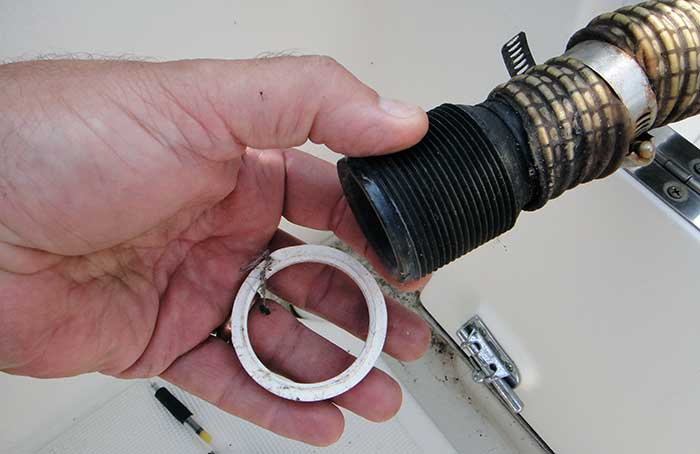
Corrugated hose is a poor choice for scupper drains. Use polyester reinforced tubing instead.
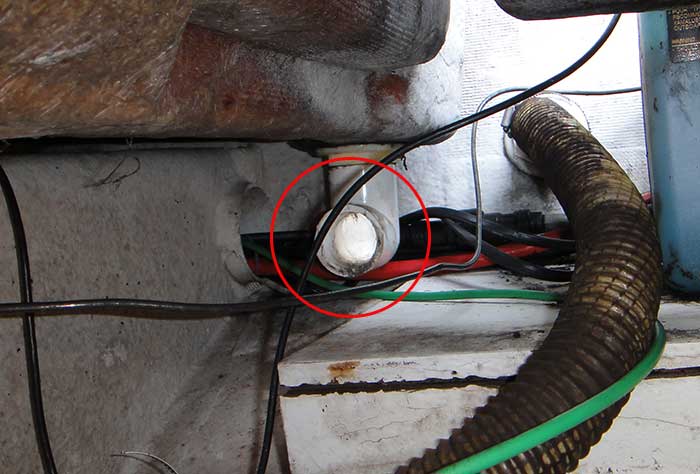
This cockpit drain leads not overboard, but right to the bilge, relying on the bilge pump to keep the boat afloat in the rain.
Another pet peeve: Why do designers and builders of boats seem to put hoses and thru-hulls in the most inconvenient (and inaccessible) places? If you can't inspect your hoses and fittings, you may not know your drains are leaking or your hoses are cracked until the sky unloads on your boat. Our fleet of recreational boats is aging. Hoses that were designed to last perhaps 10 years are now 15 or 20 years old. They are brittle, cracked and failing, yet we cannot see them, let alone service them. I have had occasions where the decks have had to be cut or inspection plates installed just to get to the junction of the thru-hull nipple, hose, and clamp.
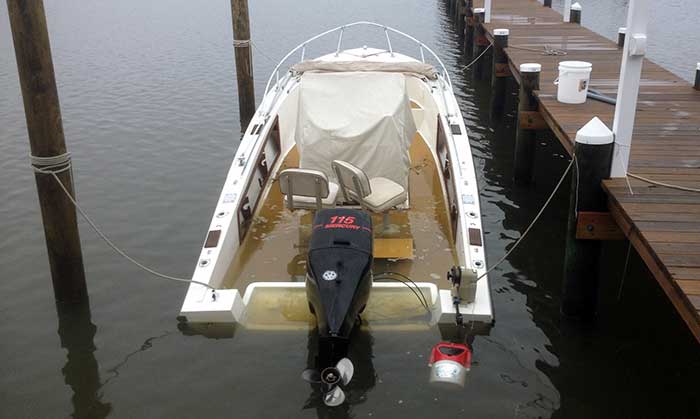
This boat had been recently repowered with a heavier four-stroke engine that brought the scuppers down too low for the boat to survive a deluge.

The cover on this boat filled with rainwater, and because the scuppers were already at the waterline, they back-flooded, and the boat sank.
Another favorite is the deck that appears to be self-bailing; I mean it has beautiful scuppers, nice hatches, is well above the load waterline, only to find out that the deck drains lead to hoses that drain into the bilge and not overboard. Disaster awaits. I fully understand that in the good old days, boats did not have self-bailing cockpits. Take for instance an old Herreshoff 12-1/2 or your normal skiff where if the boat was not covered, it filled up with rainwater. But today, if a boat is designed with a fiberglass liner and a deck that completely covers the bilge and it has drains that look like they would drain overboard, it is just plain lazy and a poor design, in my humble opinion, to have them drain into the bilge. Sure, the bilge pump may keep her afloat for a time, but she will sink and it may not be dockside the next time it may be 100 miles offshore.
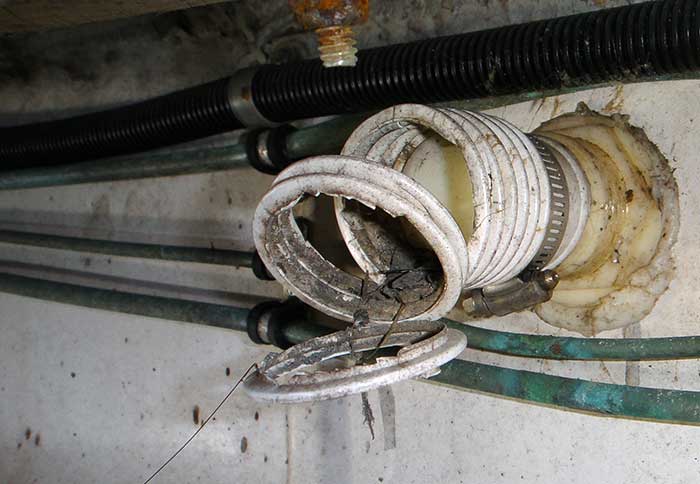
Bad design: This scupper drain hose is completely inaccessible for servicing.

A hose is only as good as its clamps. Cheap clamps look like this after a short time; use quality all stainless-steel hose clamps.
Lastly, let's take a look at normal and expected maintenance. Here are a few things that come up over and over. Outdrive universal joint and shift boot bellows: they should be inspected every year and replaced every third year, give or take. The rubber dries out and begins to crack and leak, which may be the difference between weathering the storm or not. The gimbal bearing and gimbal housing may leak water into the bilge. Plastic corrugated hoses: In my opinion, there is no place on a boat for these, unless well above the waterline. They are thin-walled and become brittle, crack, and fail. Livewell plumbing: I have seen livewells that drain into the bilge. These are often well below the water, and many have no seacock to shut off the flow of water into the well. The well fills up and, worst case, drains into the bilge or adds weight, bringing the load waterline down enough to cause flooding through the scupper. Again, think of these things as contributing to the reason so many boats sink due to rain. It might be the straw that broke the bilge pump's back.
For most of the sinkings in Jersey that week, poor hatches were to blame. They were either badly built, poorly located, or unsealed — often collecting lots of clogging dirt. OK, let's assume that I buy the need for the scuppers to be near the waterline. To be clear, I don't buy it. Still, shouldn't the hatches in the decks and all deck openings be impervious to leaking? Would you go down in a submarine with shoddy fiberglass hatches and no seal? Oh, we need them to look nice, you say? Well, my answer to that is that a nice aluminum hatch with a positive-locking system and gaskets that are waterproof look just ducky. If your deck hatches and inspection ports don't have gaskets, install them. Make sure they can be dogged down, and do that when you leave the boat so that the next big rainstorm can be shrugged off.
In the end, I'll say it again: A simple heavy rain should not sink a boat while floating dockside in calm water. If your boat is not equipped to handle rain at the dock, how safe are you at sea?
Related Articles
The truth about ceramic coatings for boats.
Our editor investigates the marketing claims of consumer-grade ceramic coatings.
Fine-Tune Your Side Scan Fishfinder
Take your side-scanning fishfinder off auto mode, and you’ll be spotting your prey from afar in no time
DIY Boat Foam Decking
Closed-cell foam flooring helps make boating more comfortable. Here’s how to install it on your vessel
Click to explore related articles
Daniel Rutherford
Contributor, BoatUS Magazine
Daniel Rutherford is director of claims and risk management for Maritime Program Group. A licensed private detective and ocean marine adjuster, he's handled more than 9,000 field assignments and recovered more than $20 million in stolen vessels and property.
BoatUS Magazine Is A Benefit Of BoatUS Membership
Membership Benefits Include:
Subscription to the print version of BoatUS Magazine
4% back on purchases from West Marine stores or online at WestMarine.com
Discounts on fuel, transient slips, repairs and more at over 1,200 businesses
Deals on cruises, charters, car rentals, hotel stays and more…
All for only $25/year!
We use cookies to enhance your visit to our website and to improve your experience. By continuing to use our website, you’re agreeing to our cookie policy.

IMAGES
VIDEO
COMMENTS
By Morten Storgaard / Boating, Sailboats, Yachts / Reviewed by: Albert Presgraves, Boater, Engineer. Yachts can tip over, and they can sink just like any other type of boat. However, some yachts can capsize and sink more easily than others. The size of the yacht and the draft plays an important role when it comes to capsizing.
r/sailing. • 1 yr. ago. ADMIN MOD. Question that only sailors could answer. Tonight, my mum and I sat down and watched "True Spirit", the film about Jessica Watson on Netflix. When we saw the scene where her boat capsized and went 15 feet underwater before righting itself and coming back up, I wanted to know if that was an actual possibility.
With rudder going straight back, give it some throttle until you have water passing the rudder. You then steer it like a car. Slow down near the slip, aiming at the farthest corner. Slowly glide in, and stop the boat with a little throttle in (forward). It also helps if there is somebody to help you tie up and stop the boat if necessary.
Hopefully, you now have a good idea about how and why sailboats tip over. A good sailor will be able to keep their boat the right way up in most conditions. But, not all of them. Sometimes even the best sailors can find themself with an upside-down boat. If you do find yourself with a capsized boat, remain calm and follow the above steps.
Sailboats have different degrees of tipping or heeling, from normal to excessive. The most severe cases are blowdowns and knockdowns, which can cause damage or injury. To prevent your sailboat from tipping over or capsizing, you need to balance the forces of wind and water on your boat, adjust your sails and course accordingly, reef early and ...
In the event your cruiser is involved in a blow down, remain calm. Give yourself a moment and take stock of the situation. What will immediately come to mind is the realization that you have too much sail out. If there is a reprieve in the gust, the keel will stand the boat back up.
The answer is yes, sailboats can sink, but whether or not they can resurface depends on a number of factors. The most common cause of sailboat sinking is taking on water. This can happen for a number of reasons, including leaks in the hull, a ruptured water tank, or a sudden storm. If a sailboat takes on enough water, it can become too heavy to ...
Better ways to end than drowning trapped in a sinking boat were starting to be seriously considered on board when the yacht finally rolled to one side and came back, with a fair volume of water inside, but upright. The boat was reportedly upside-down for some 20 minutes. The crew bailed it out and brought it back.
Always ensure you distribute weight on the ship evenly to prevent tipping the boat over due to instability caused by uneven distribution of weight. Modification on the boat can affect its stability: Any modification to the boat which increases the center of gravity will make the boat unstable. For instance, a small tuna tower can easily ...
When a boat sinks, it may be declared a total loss, meaning it cannot be salvaged. This means that the boat will no longer be able to be used and the owner will need to purchase a new boat or find another means of transportation. The circumstances of the sinking will determine whether or not it is declared a total loss.
Work logically through all of your boat's through-hull fittings from bow to stern. A laminated diagram should be kept with the yacht's documents. Be sure to include the stern gland. Pump as ...
There have been a few sailboats designed by Etap that are unsinkable but the majority of all sailboats can sink. Check with your boat's manufacturer for more information on the build of your vessel. When it comes to safety always be prepared when your boat is taking on water. Even if you think your boat can't sink, be prepared if it does.
Each year on average, roughly 200 sailboats capsize and sink, which is less than you would imagine for the amount of boats on the water. If you are dinghy sailing, these typically capsize but do not sink. According to US Coast Guard reports in 2020, there were 211 boats that capsized and sank. After careful analysis, boat sinking is a lot less ...
Discounts on fuel, transient slips, repairs and more at over 1,200 businesses. Deals on cruises, charters, car rentals, hotel stays and more…. All for only $25/year! Join Today. Improve your chances in a survival situation by being an active participant in your own rescue. An interview with a rescue expert.
Figure 3. Sailboat with a nail for ballast. Put your boat back in water and watch what happens. If your boat still doesn't stay upright, add a second nail in a straight line with the first one (Figure 4) and put it in the water again. Keep adding nails, one at a time, and re-testing until your boat stays upright.
There are two reasons for this discrepancy. One reason is whenever a boat leaves the dock, someone is aboard, which leaves open the possibility that the leak will be discovered and the problem corrected before it sinks the boat. And the second reason is that boats tend to spend a majority of their time at the dock.
Messages. 2,266. Apr 21, 2010. #16. Re: sink drain is below the water line. Absolutely nothing unusual or wrong with the setup you have. (Though as has been pointed out, a sink drain above the waterline does add a bit of 'security' if something fails.) The inlet & outlet for the head are always below the waterline.
Often, the tightening gear and its case are mild steel, which rusts away. 6. Trapped Under a Dock. What Happened: You tied up the boat at low tide. The wind pushed part of the boat under the dock, the tide came up, and the boat became trapped beneath the dock, then sank.
Rocks and sand: Running aground is not only hazardous for your boat hull, but it can also be dangerous for the occupants onboard the ship. Keep a close eye out. If you do strike an object in the water, take the boat out right away and get it looked at for damage. Tied up at the dock: Not common, but it could happen, you might have tied your boat up at the dock while the tide was low and as the ...
Batten Down the Hatches. This simple step would prevent countless sinkings. At some point, it is going to rain. If the hatches leak — especially cockpit hatches where rainwater can accumulate — then we can end up with water in the bilge, an overwhelmed bilge pump, and a progressive sinking situation.
A heavy rainstorm has the potential to sink boats, but it doesn't have to be that way. Keeping rain from sinking a boat requires proper design as well as owner involvement. Let me start with a few apparently false assumptions. The boats we use should be designed to float even when it rains. Bilge pump systems should be able to expel water from ...